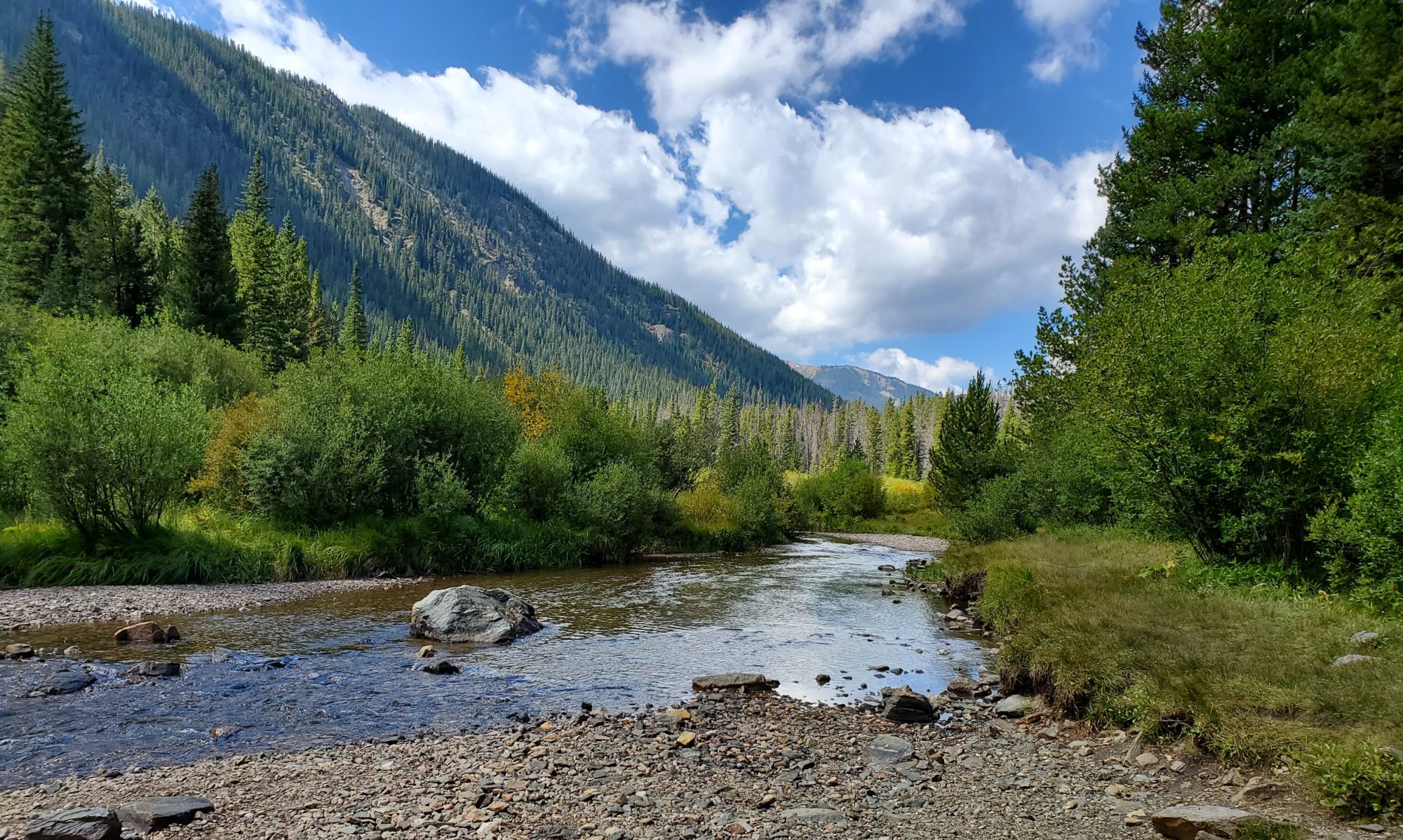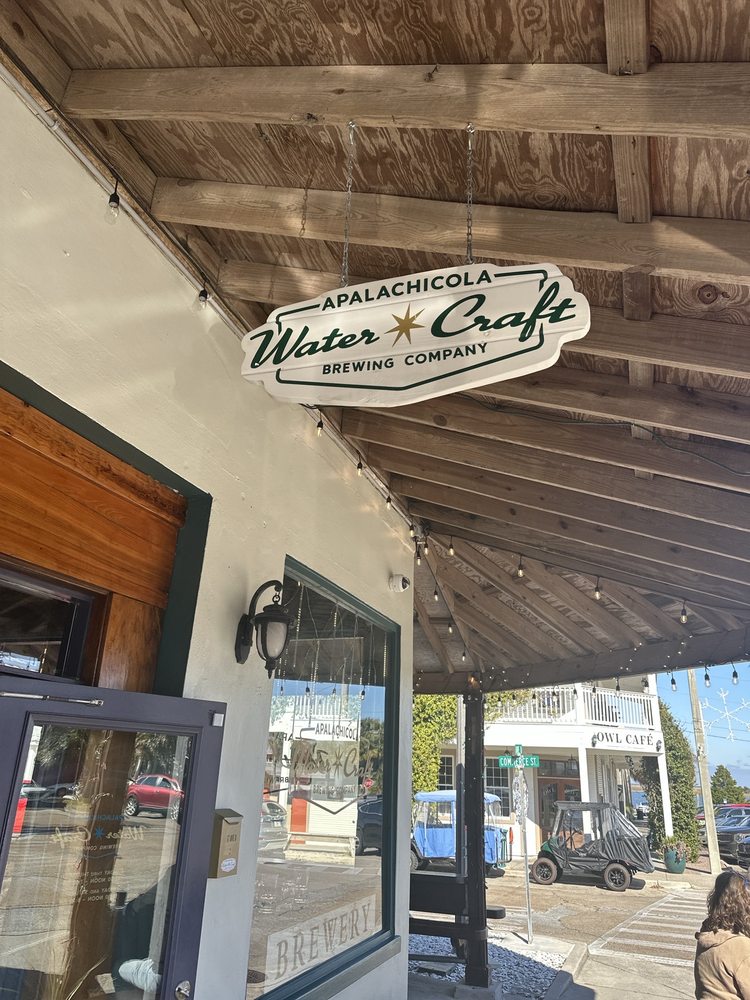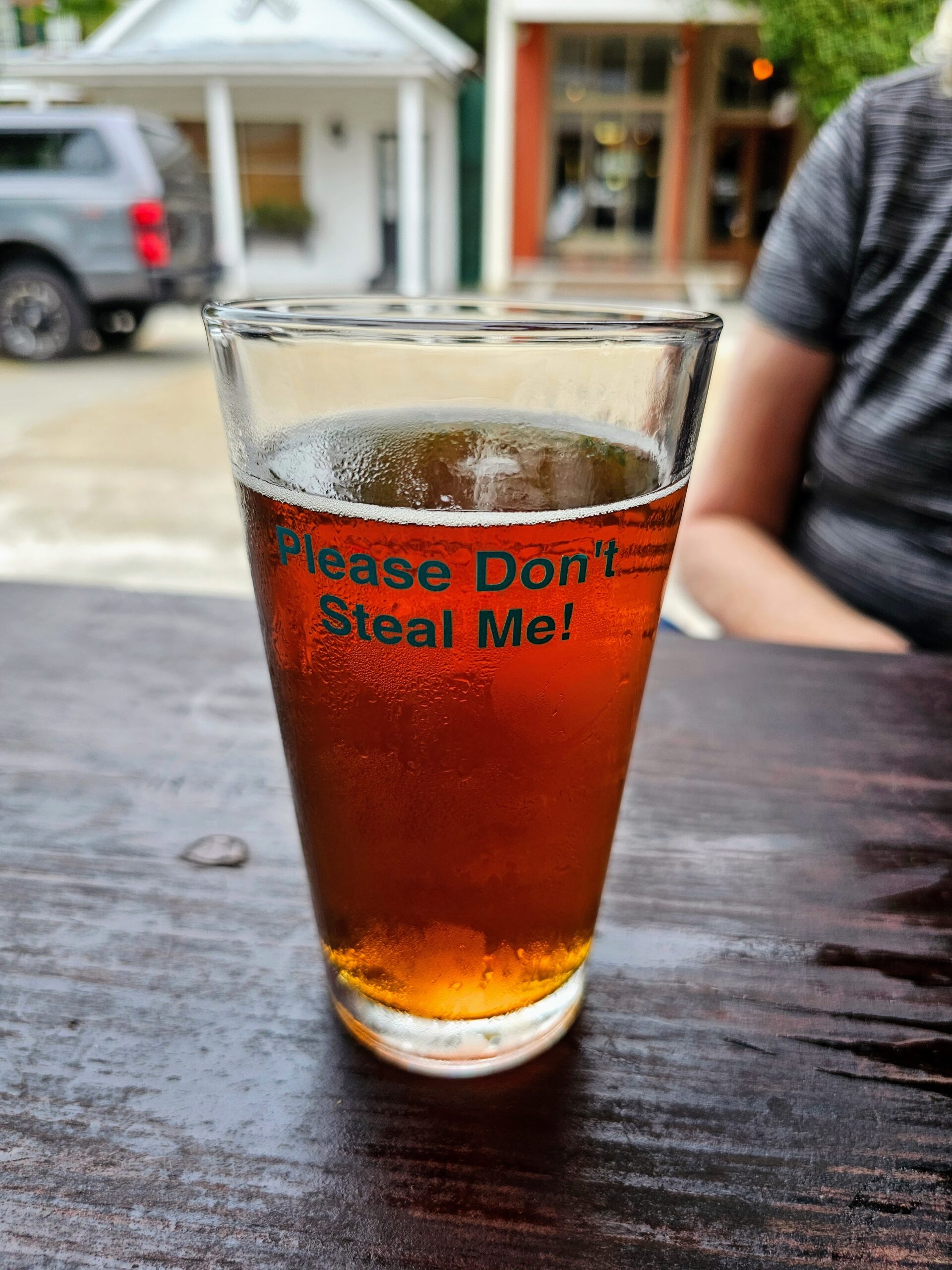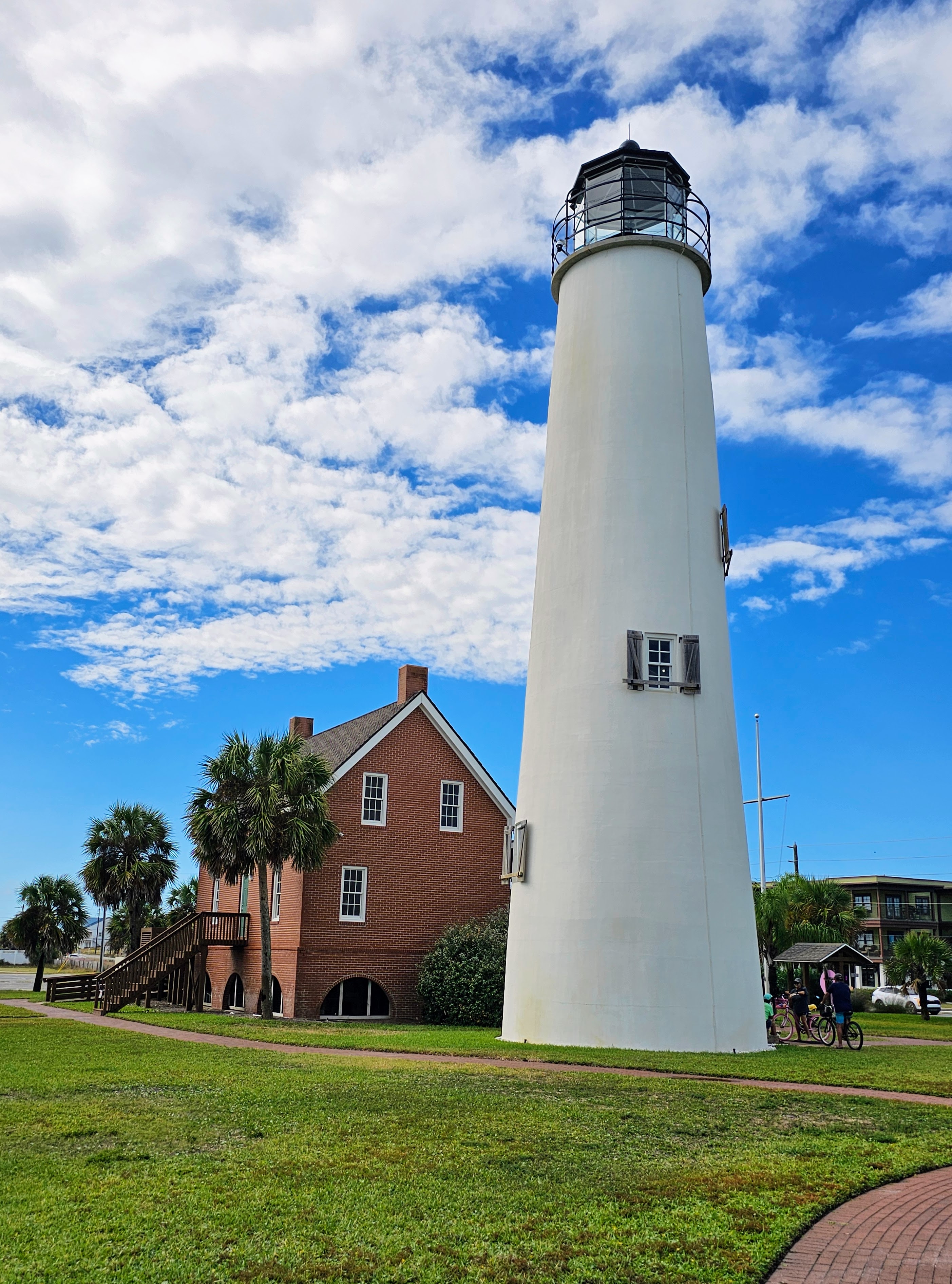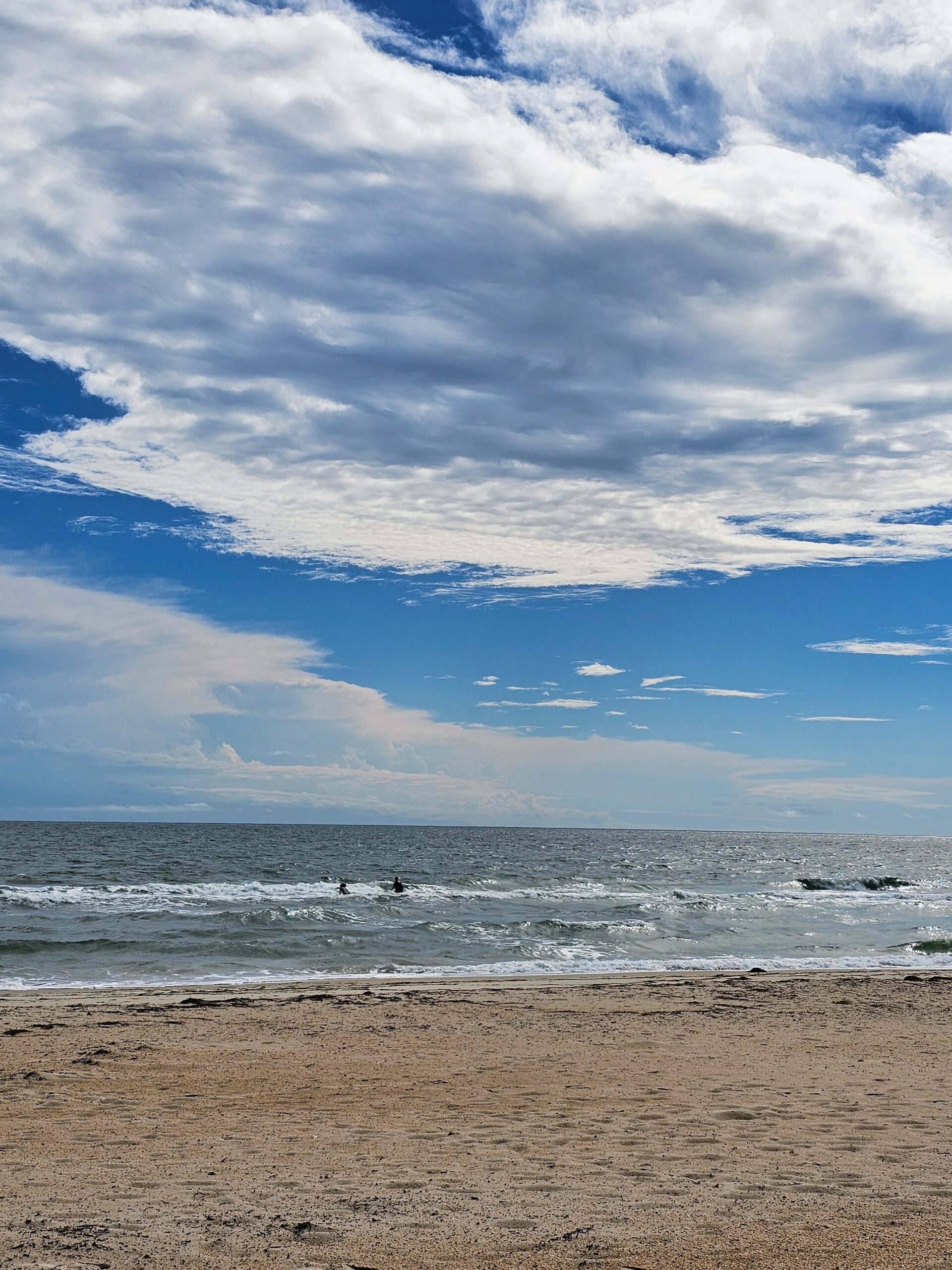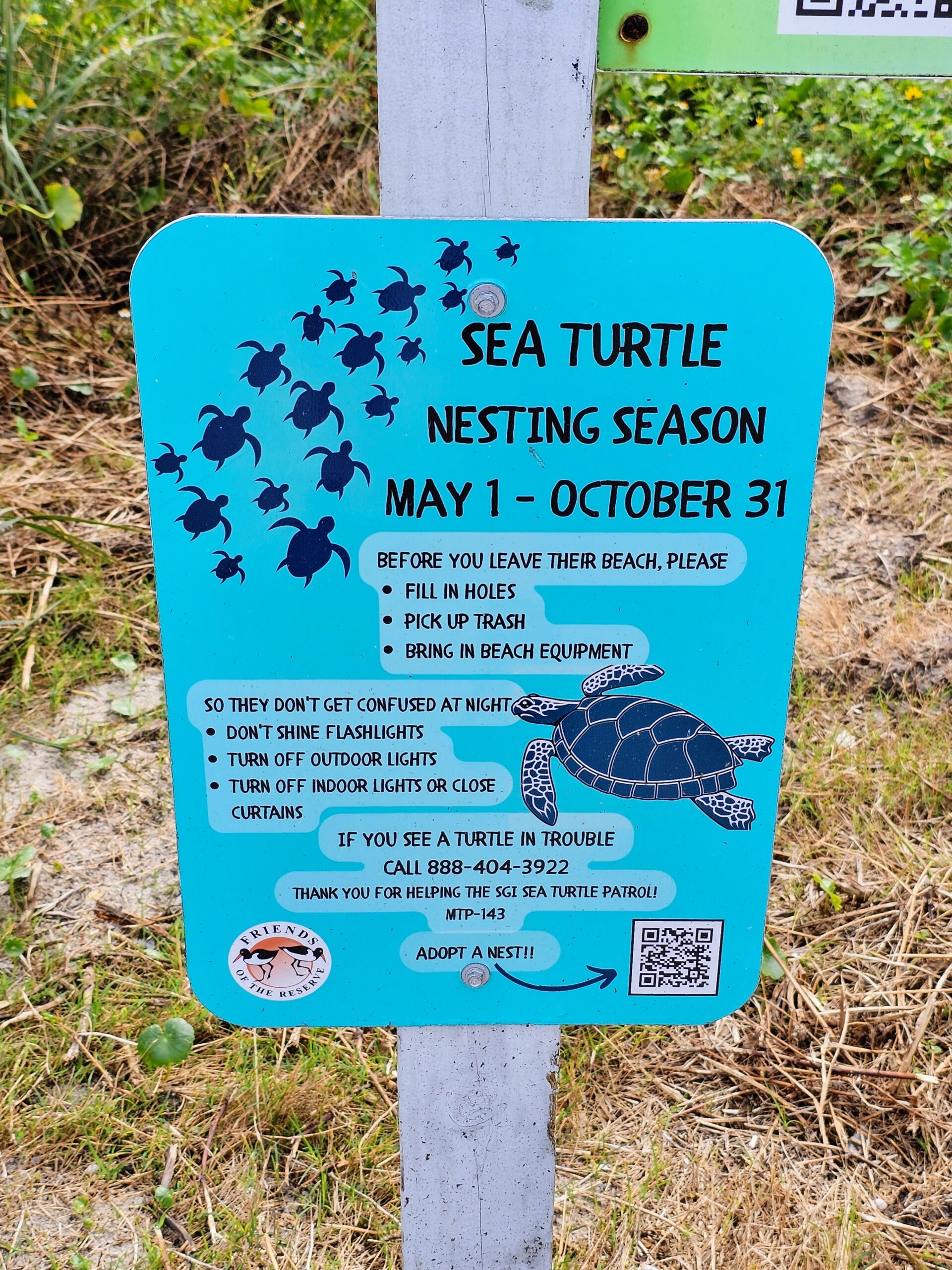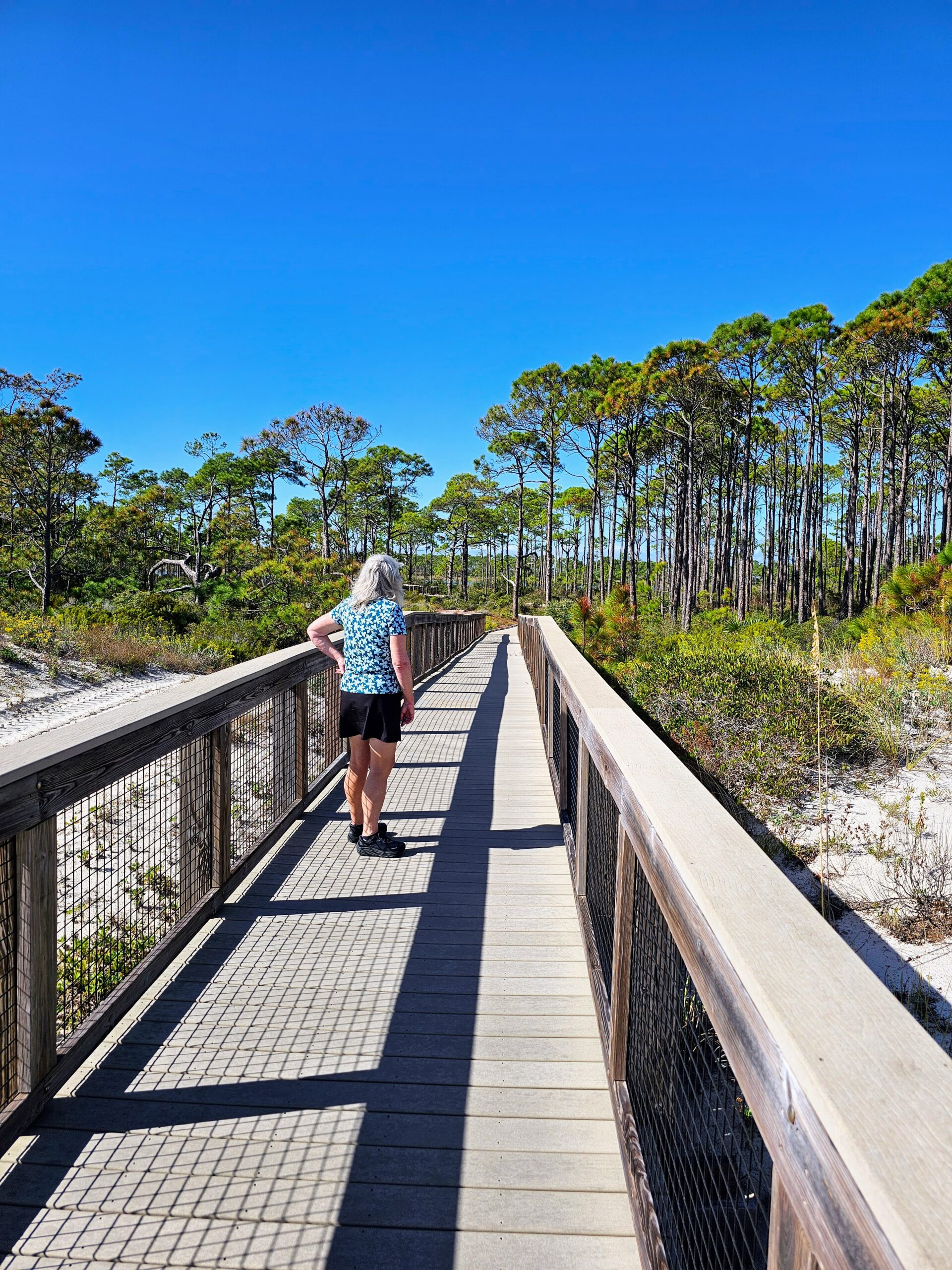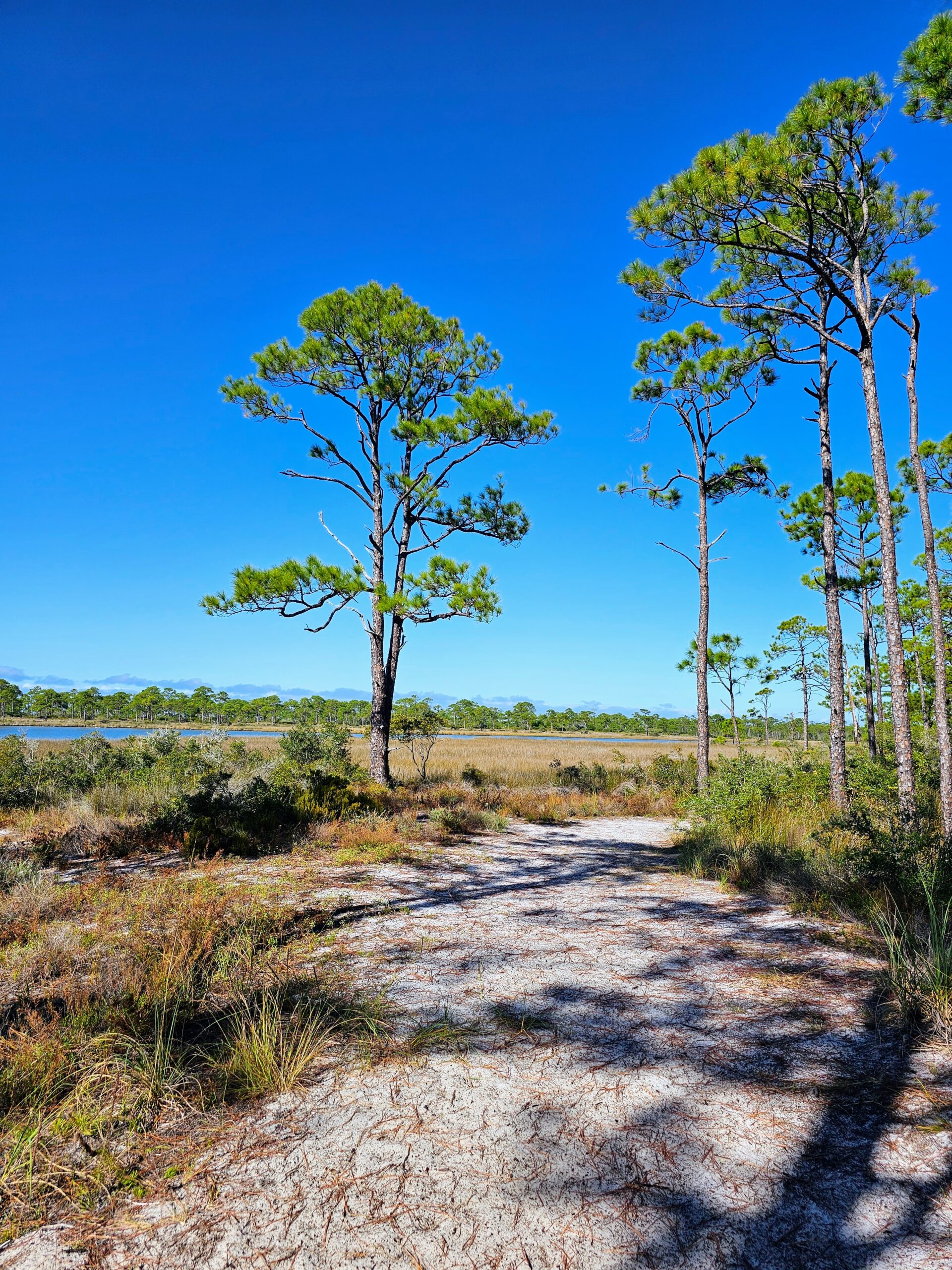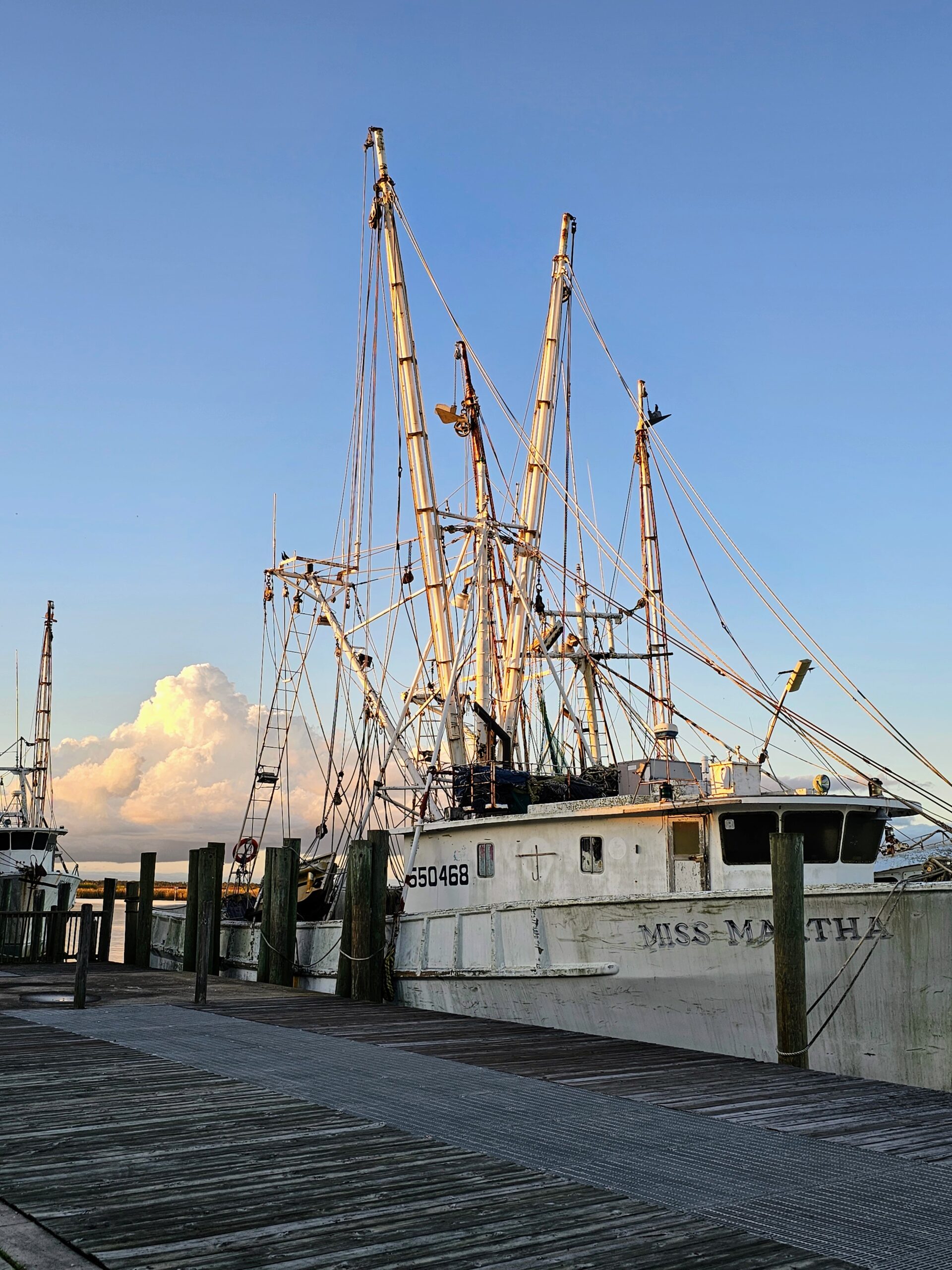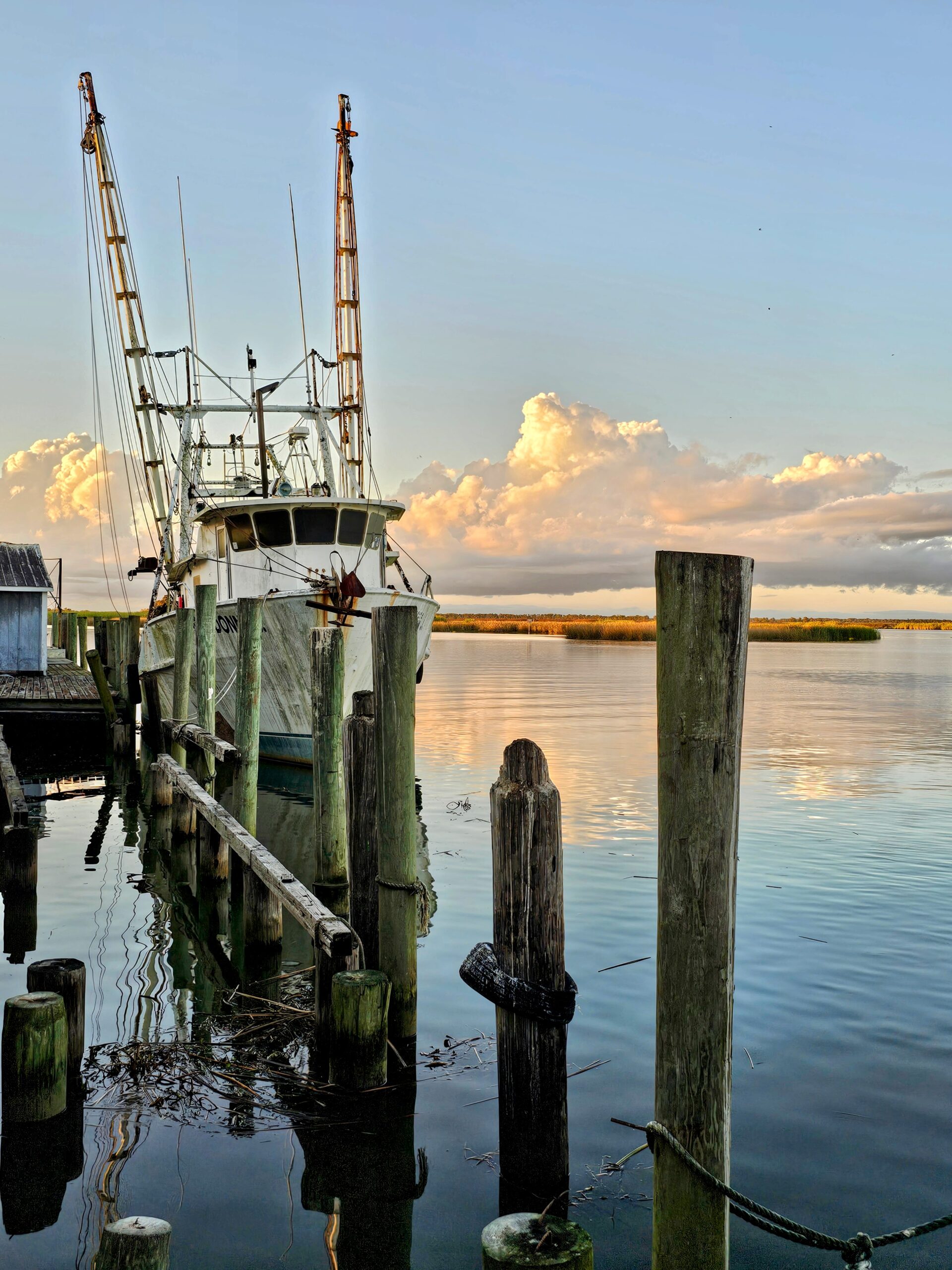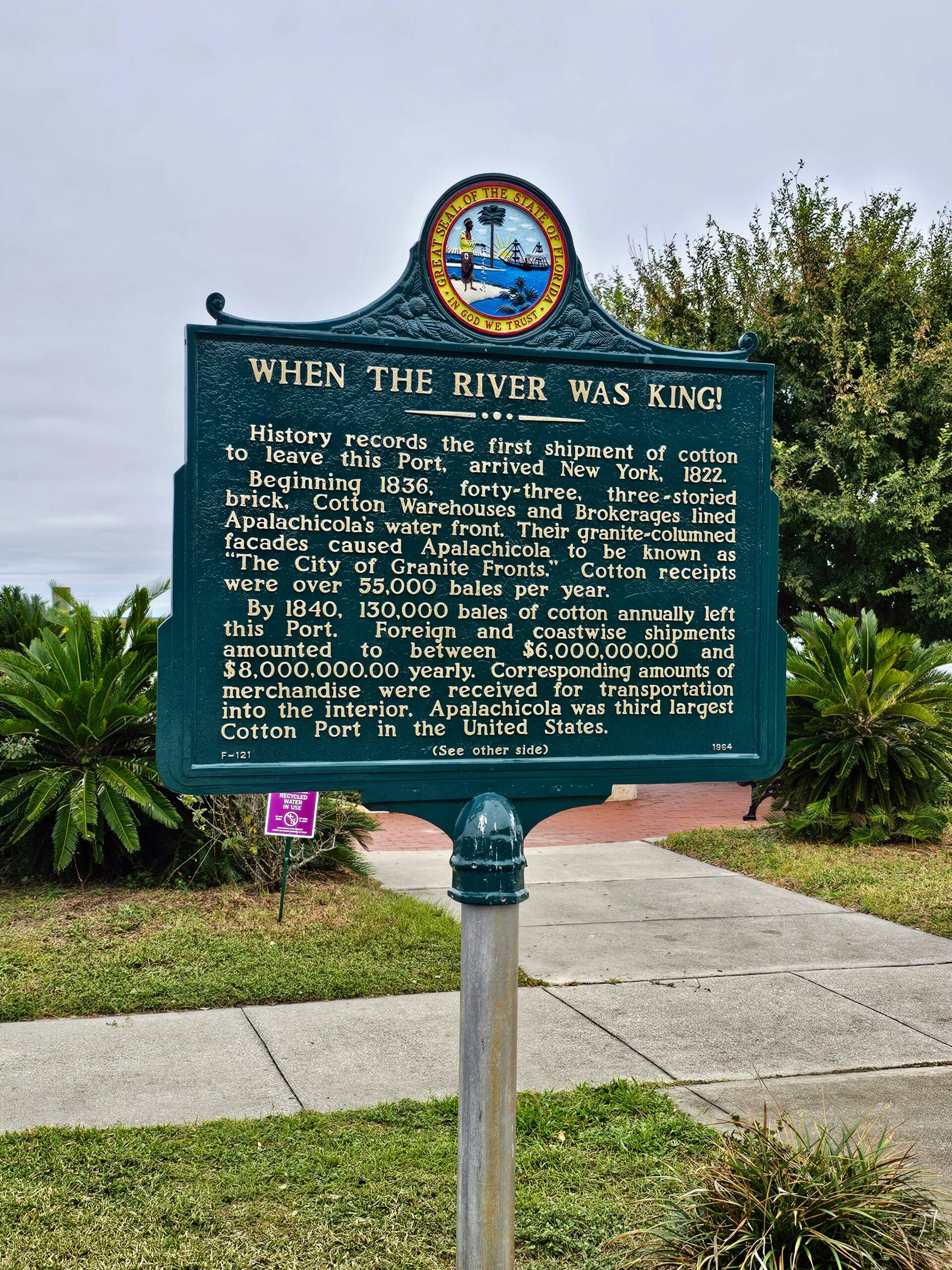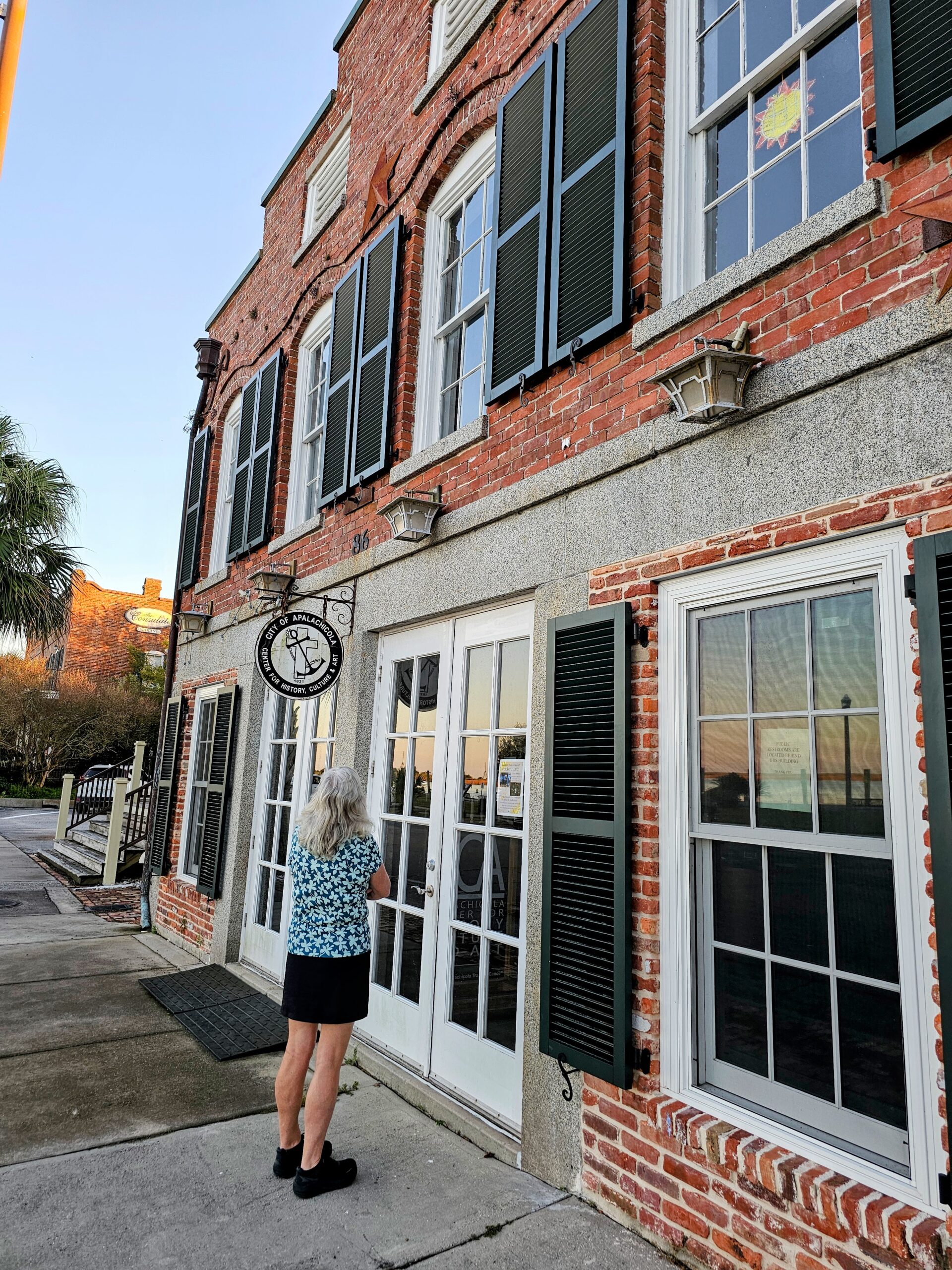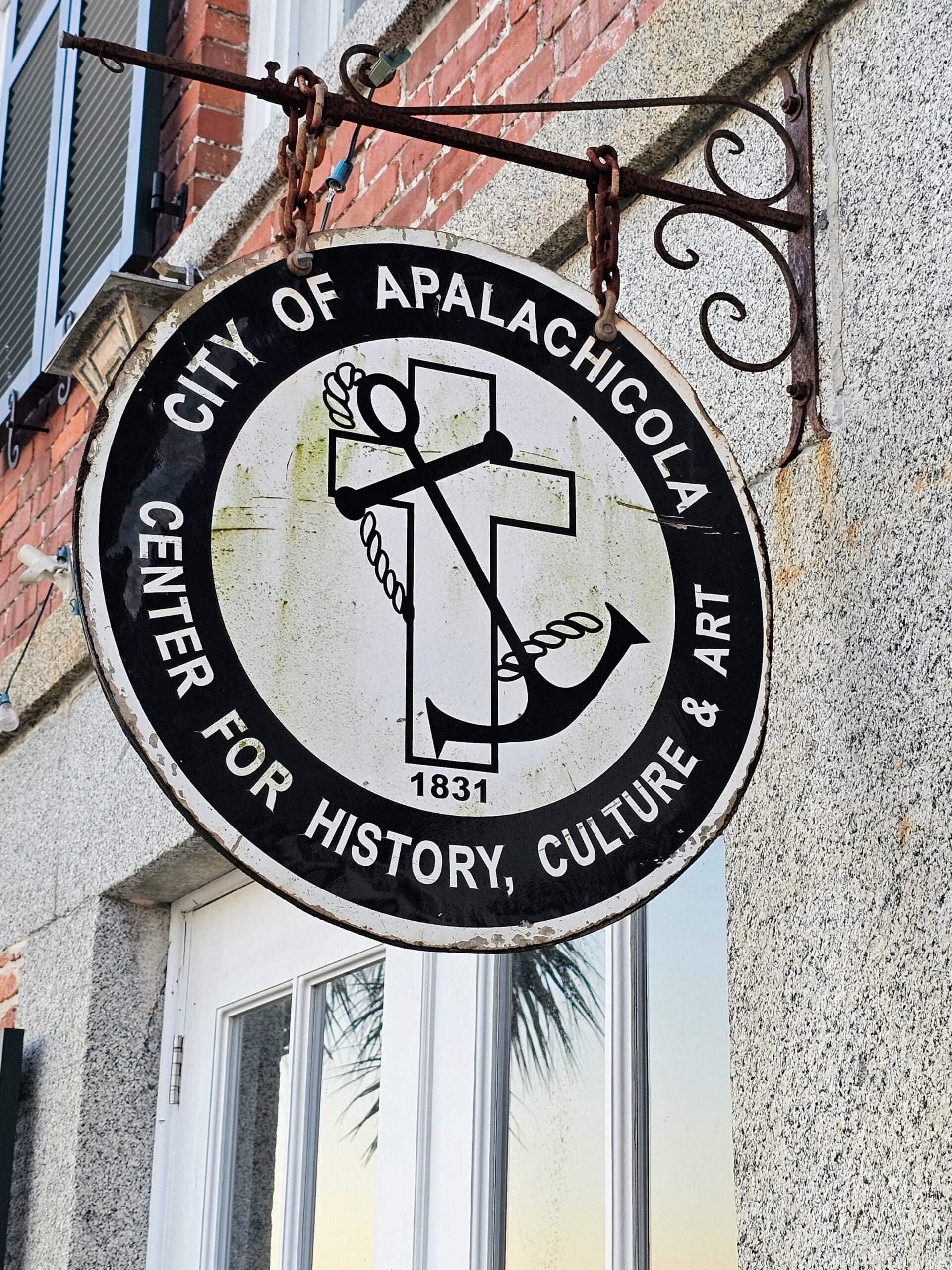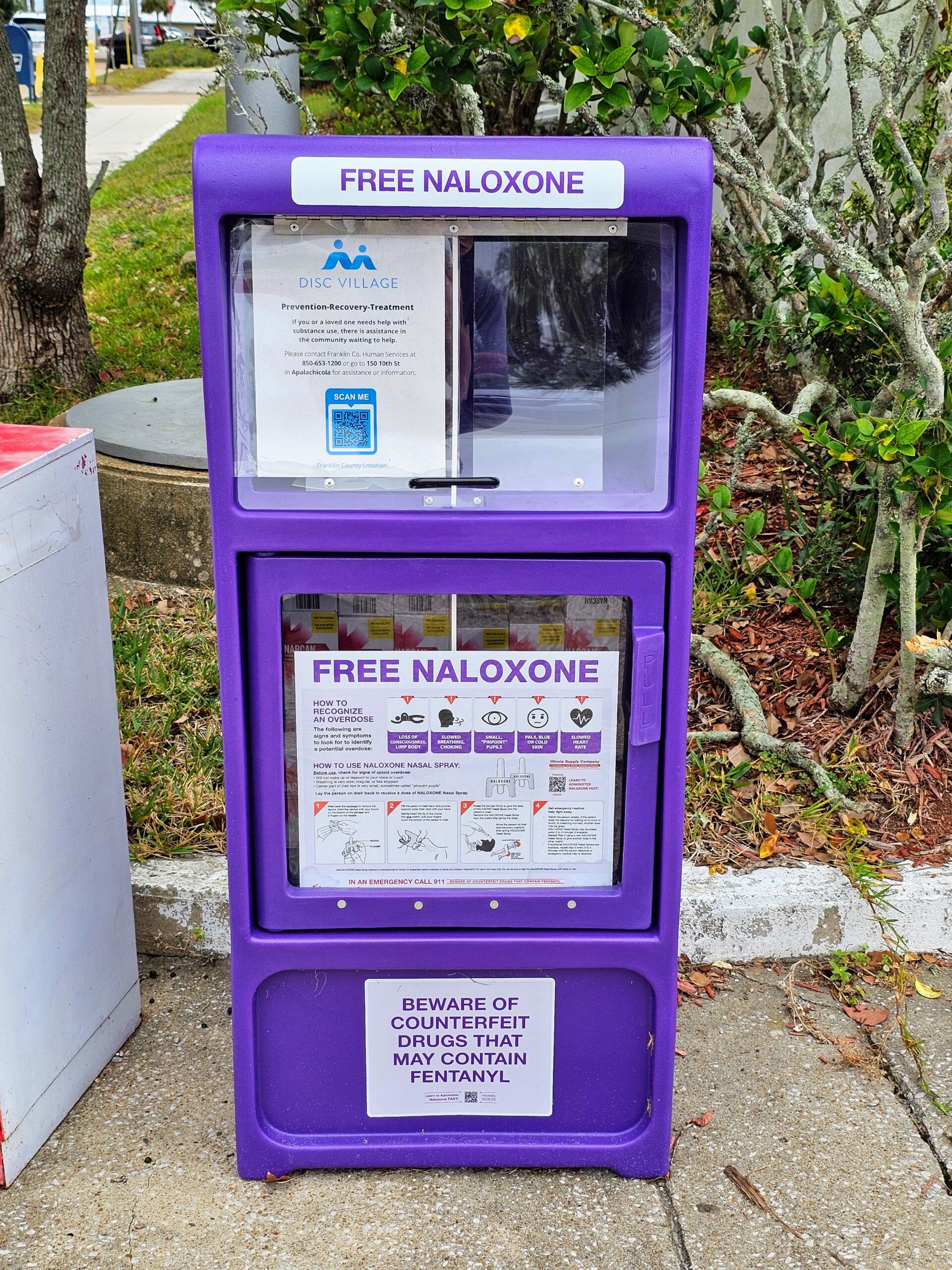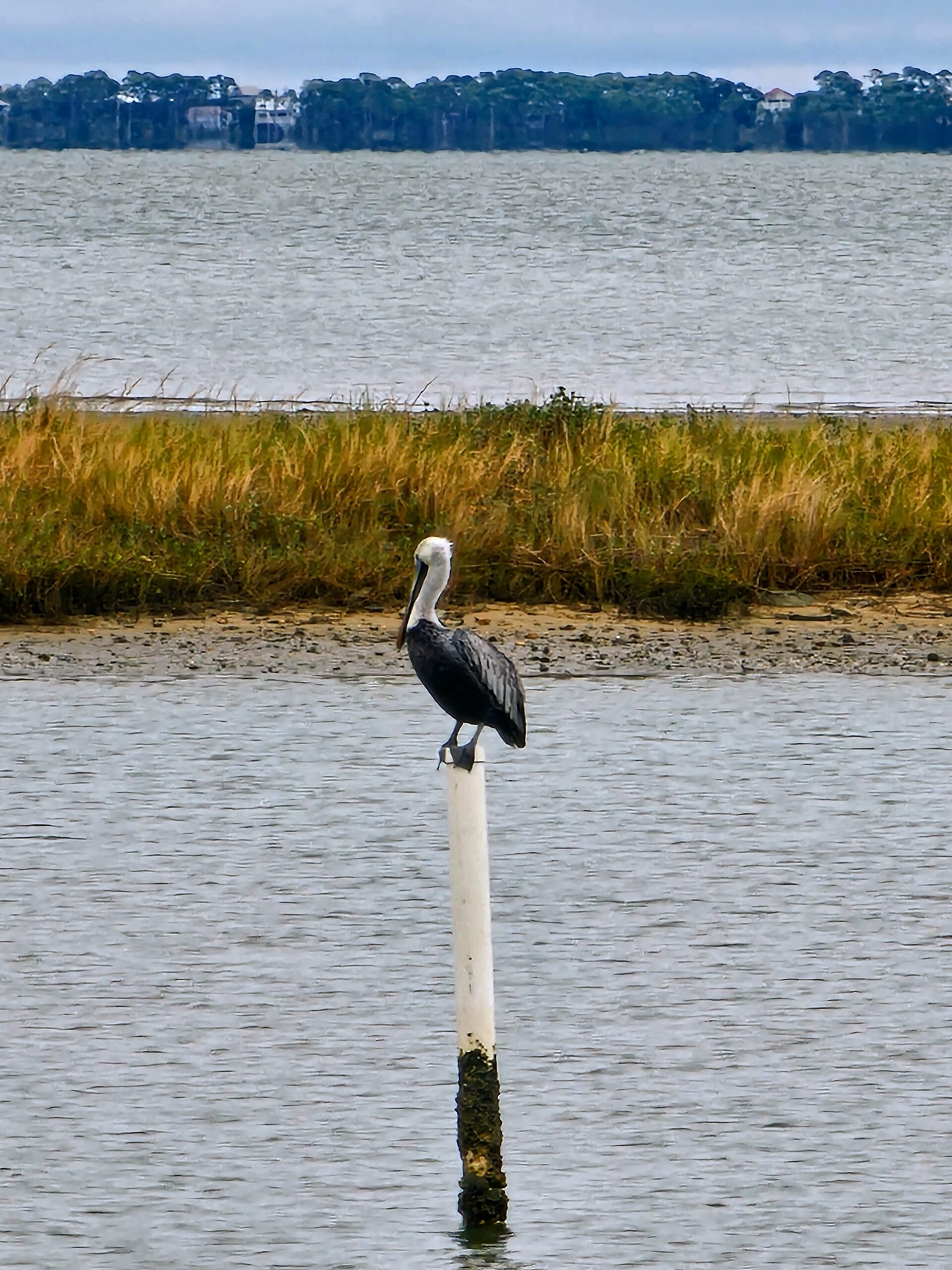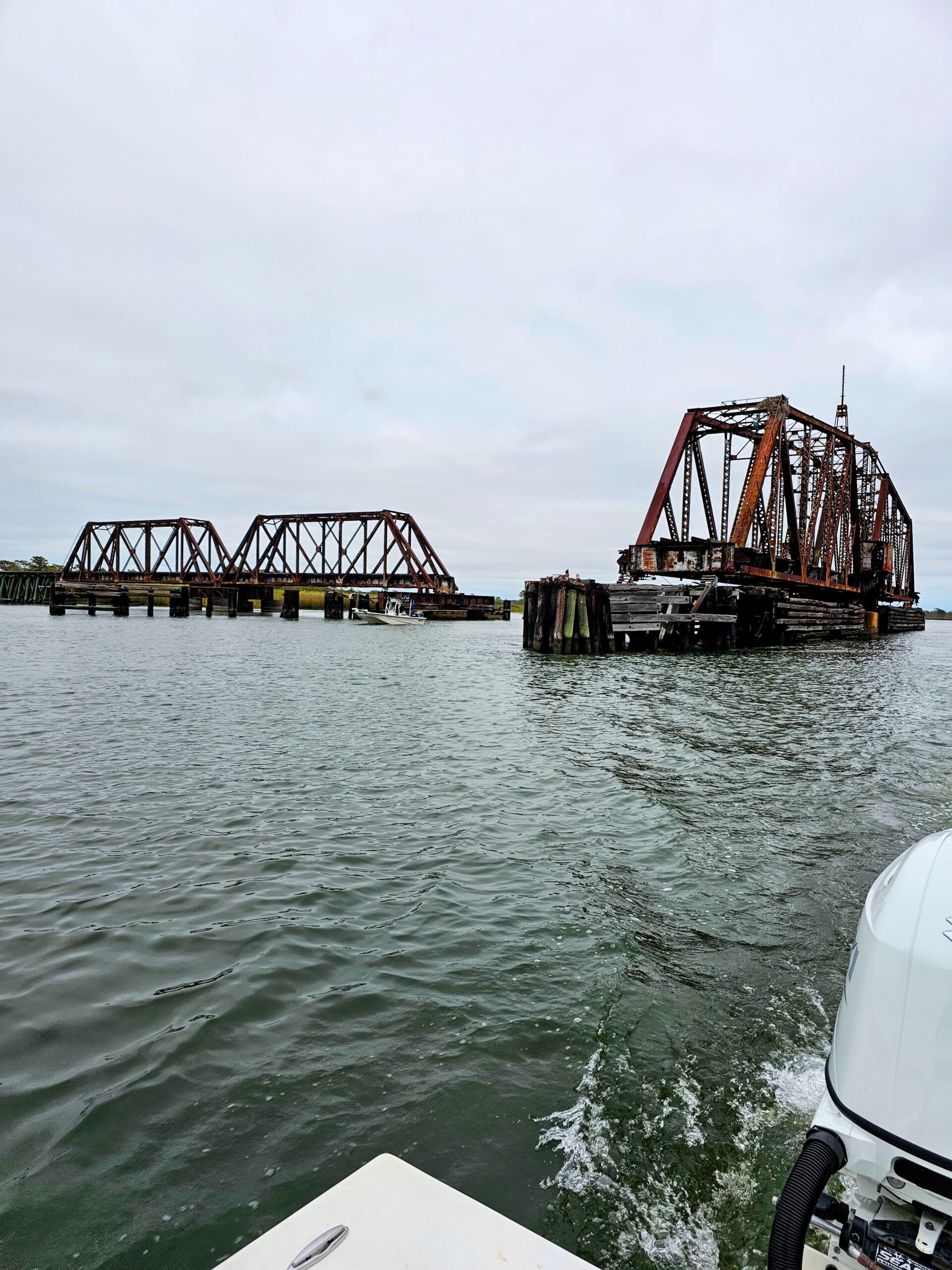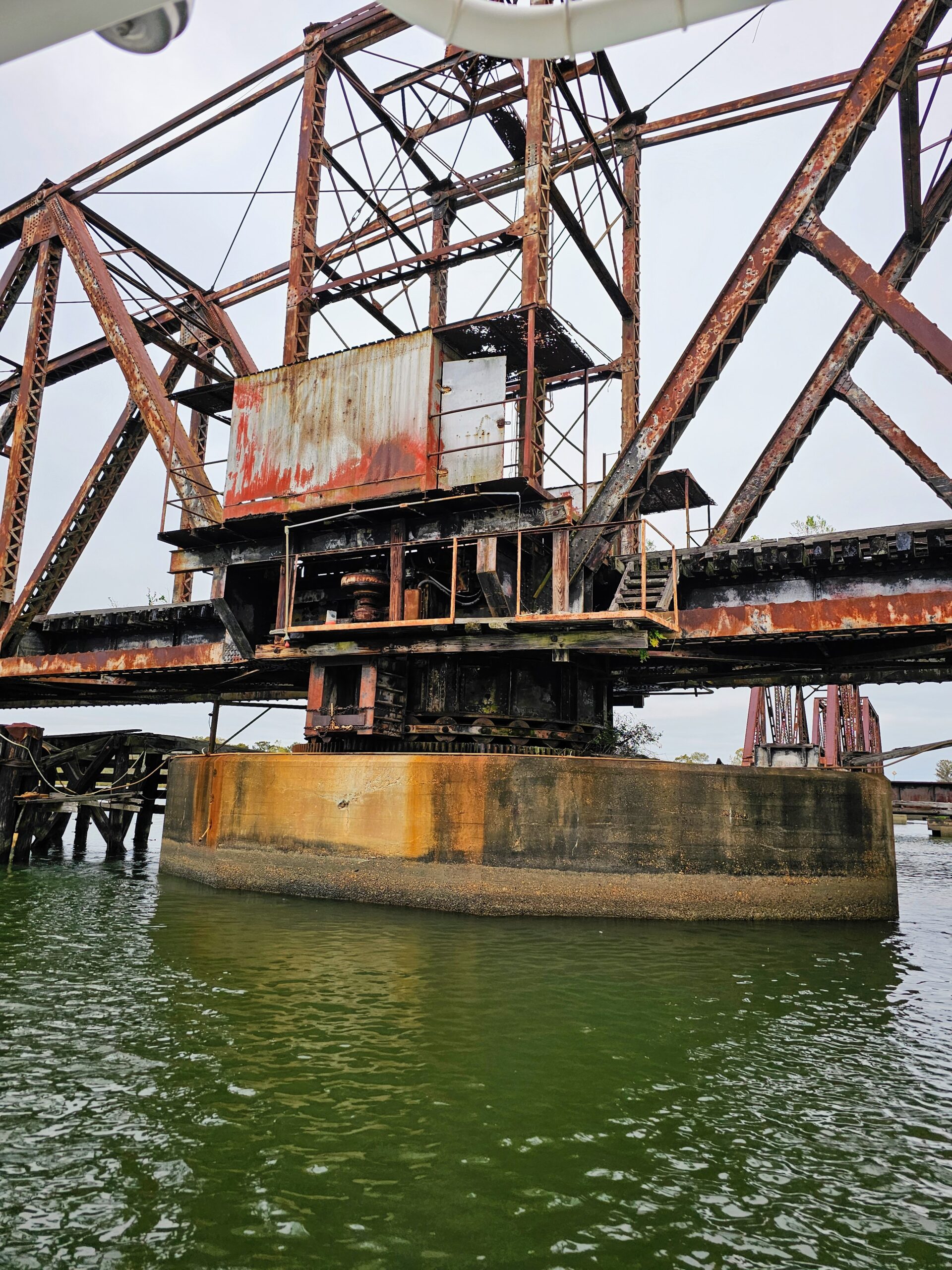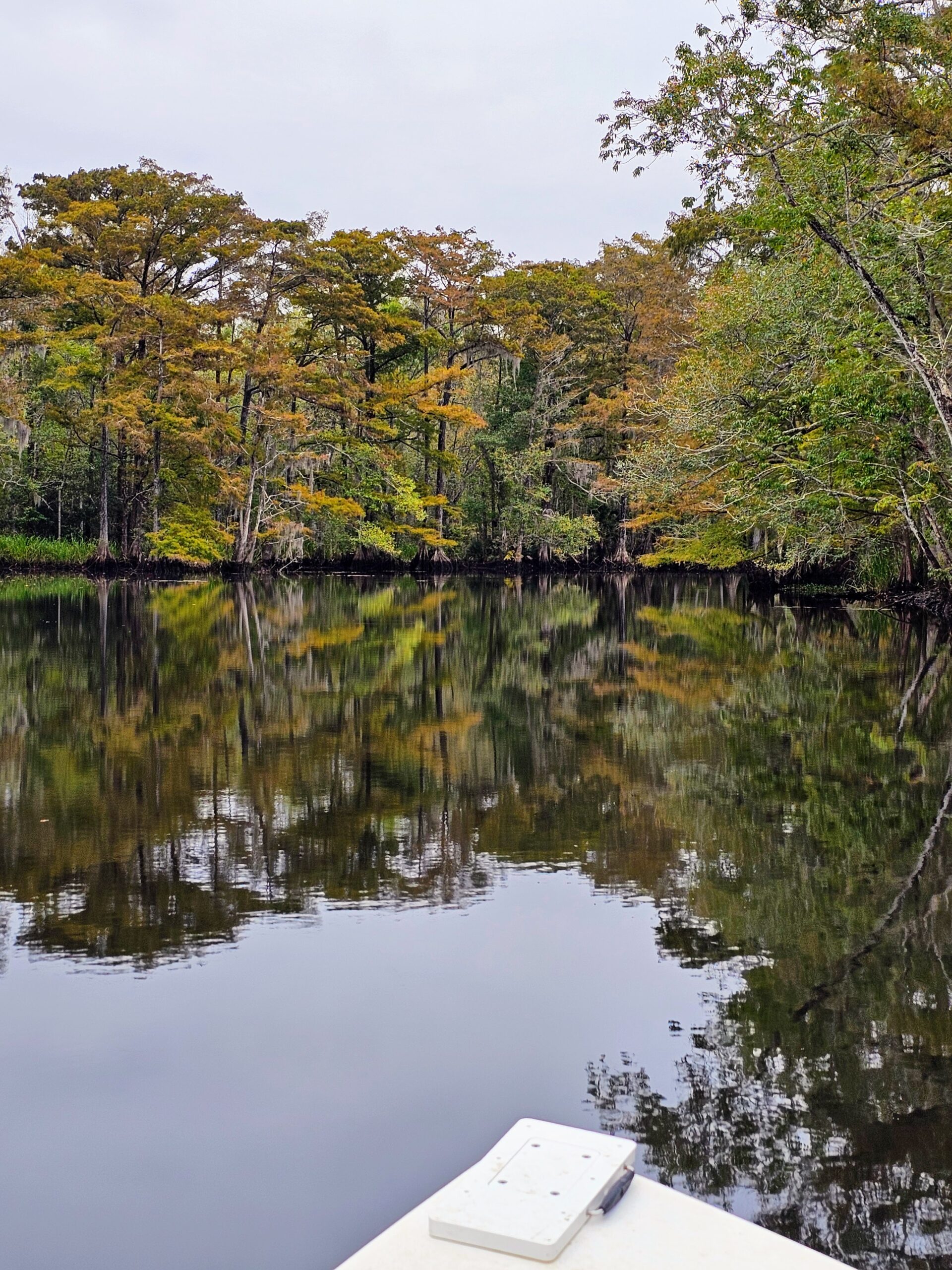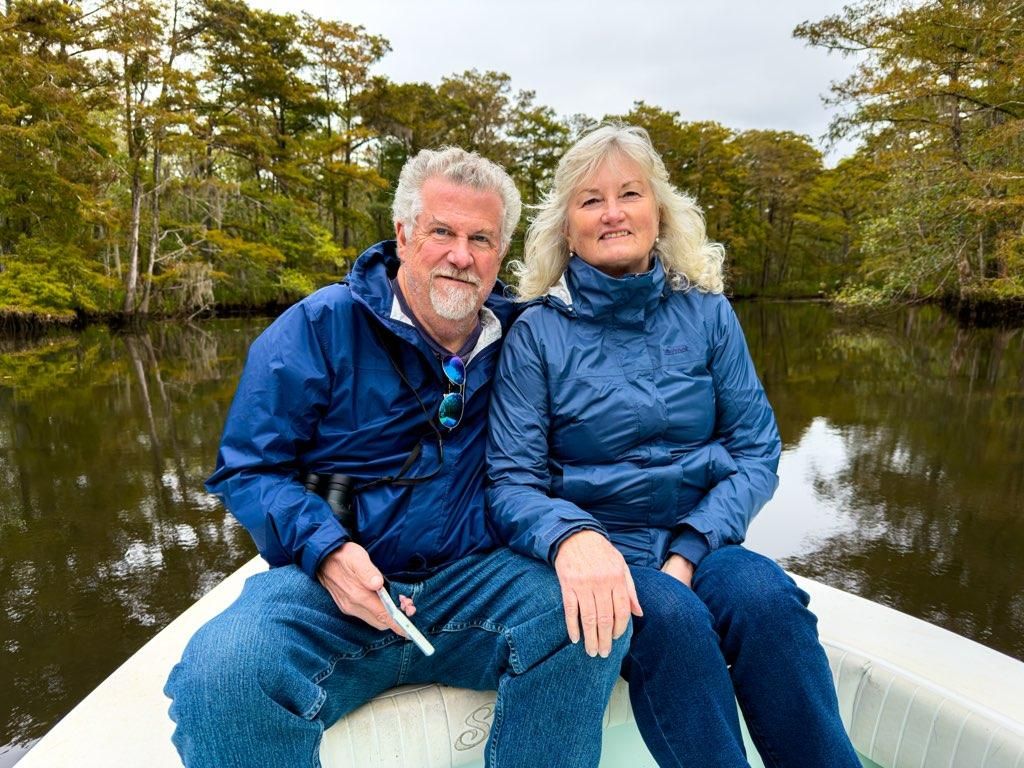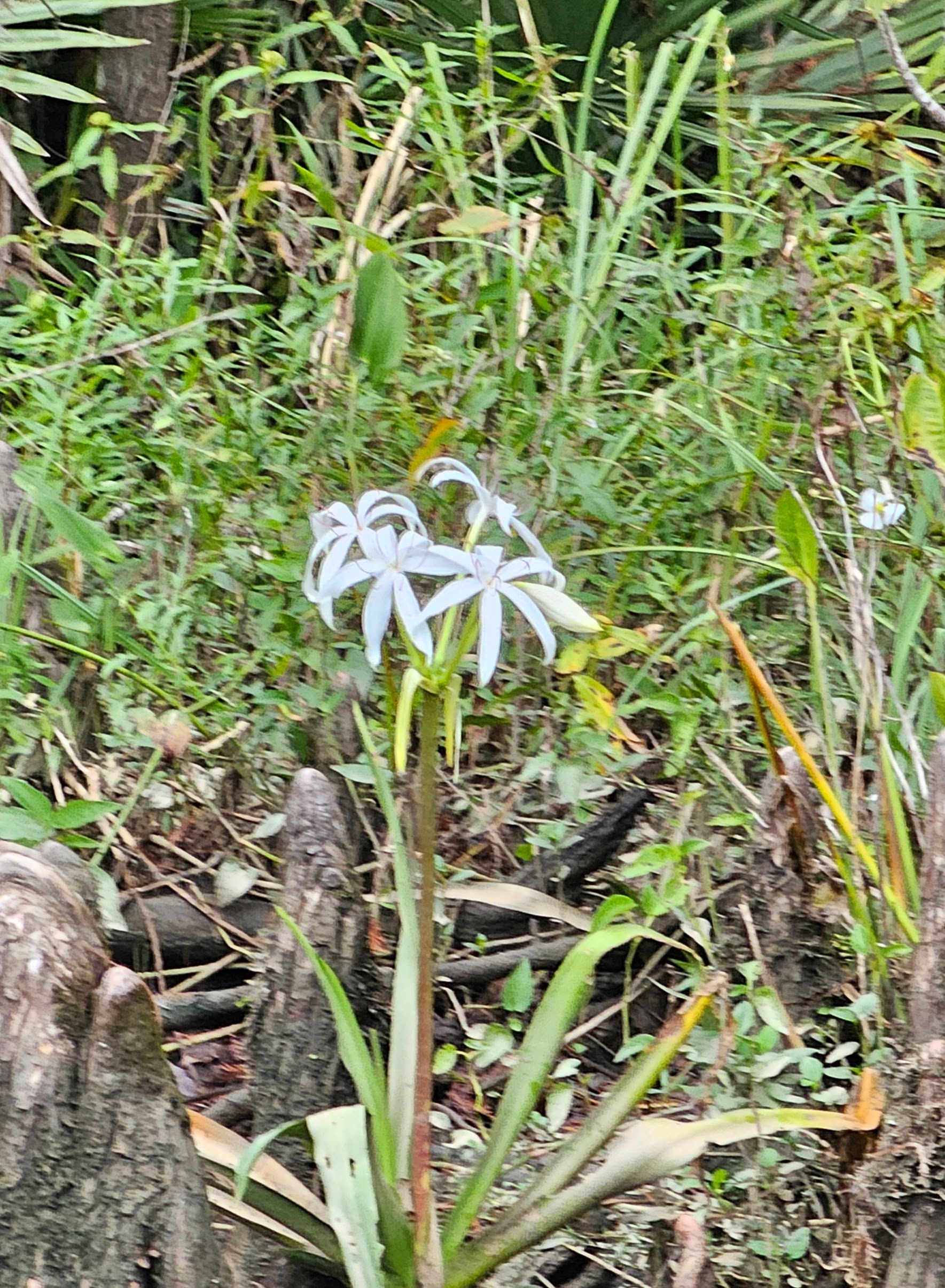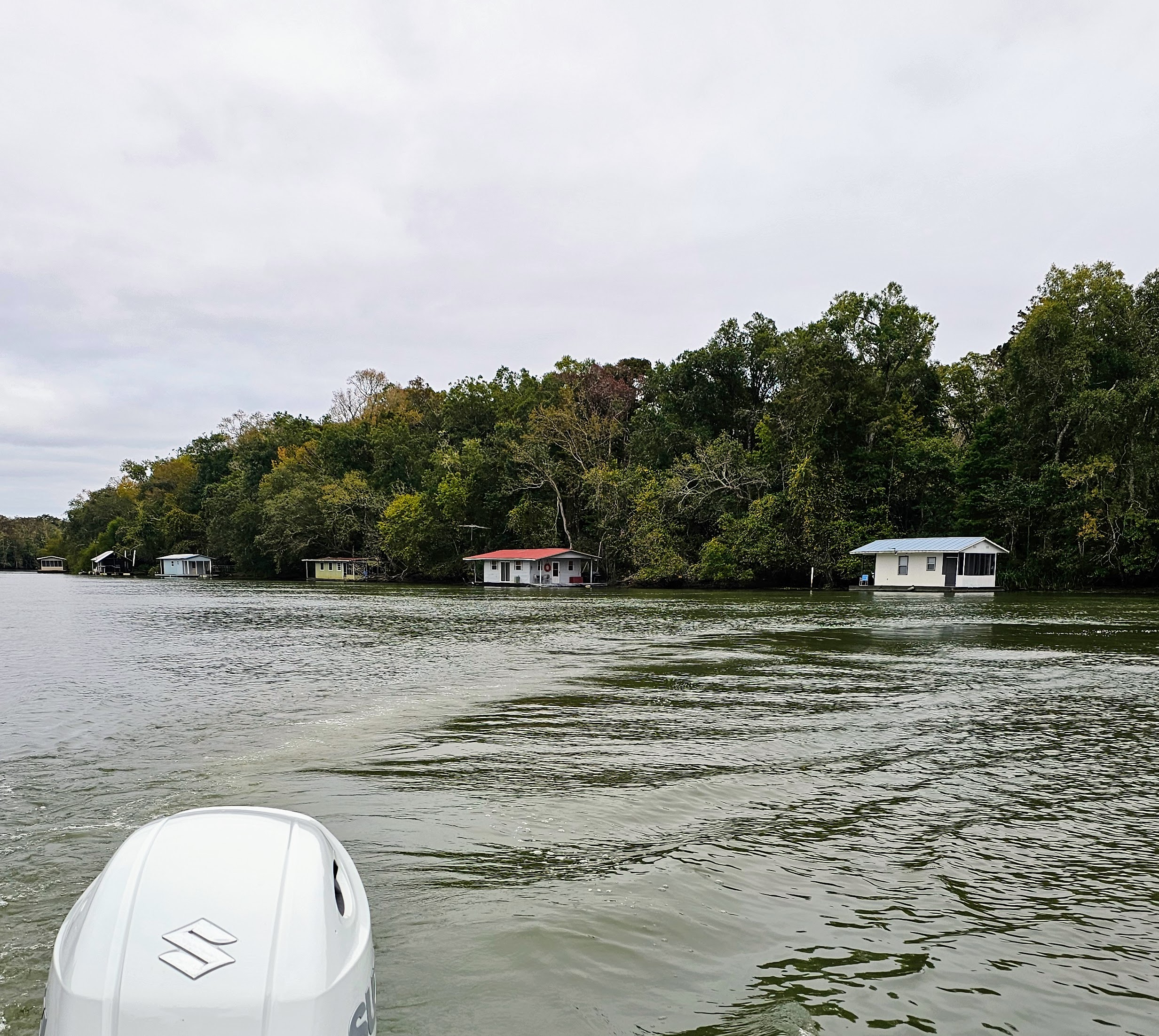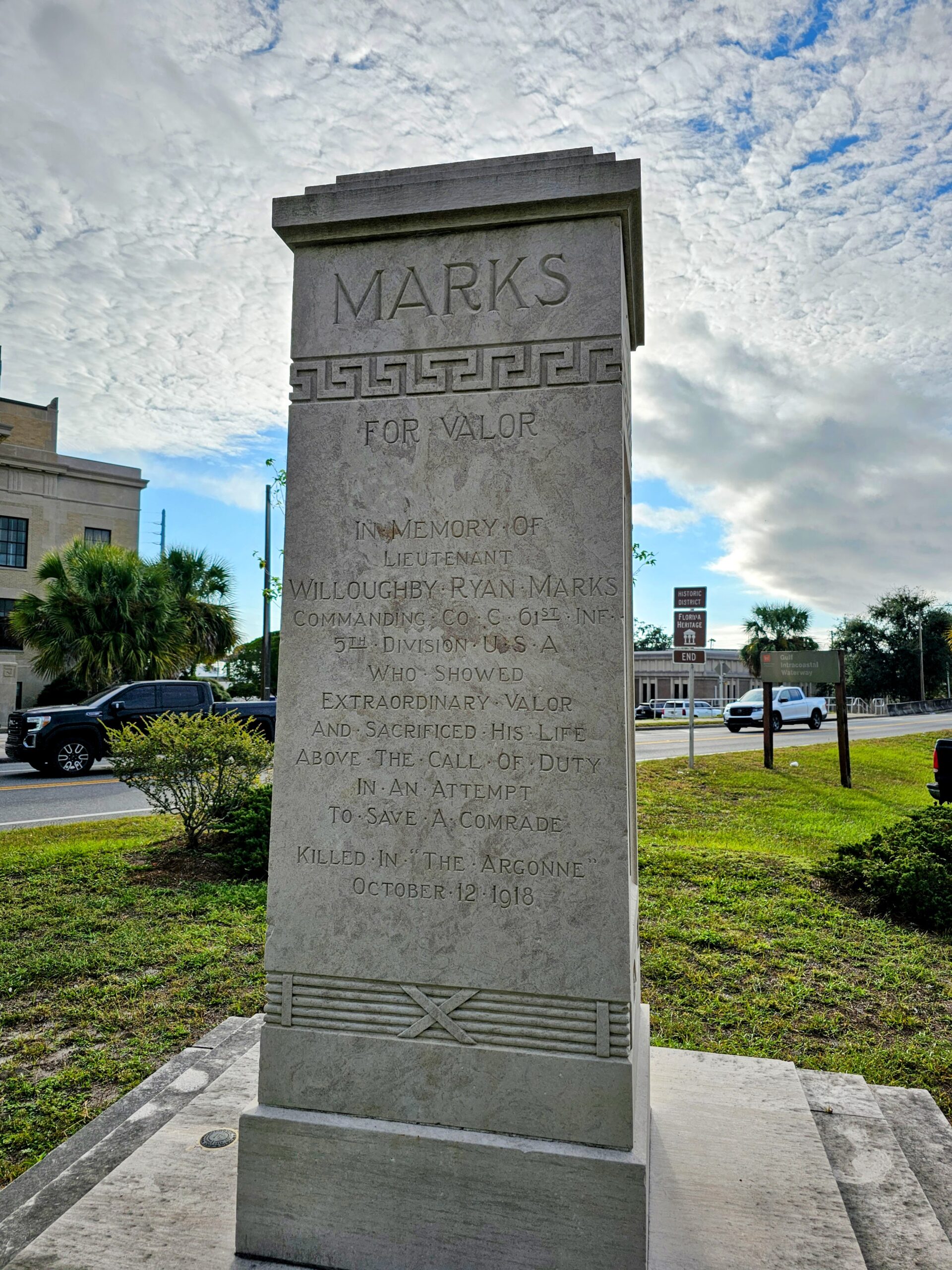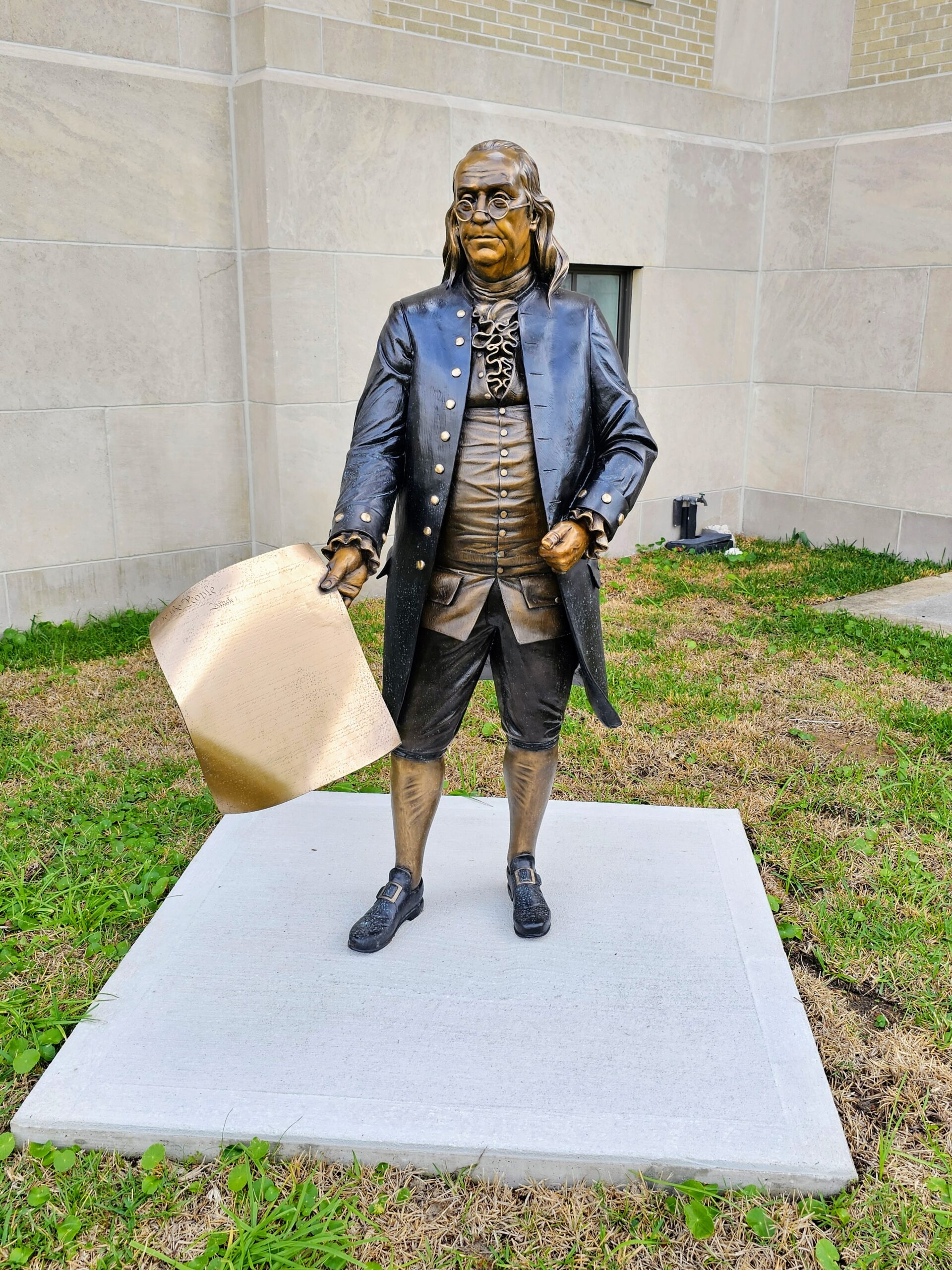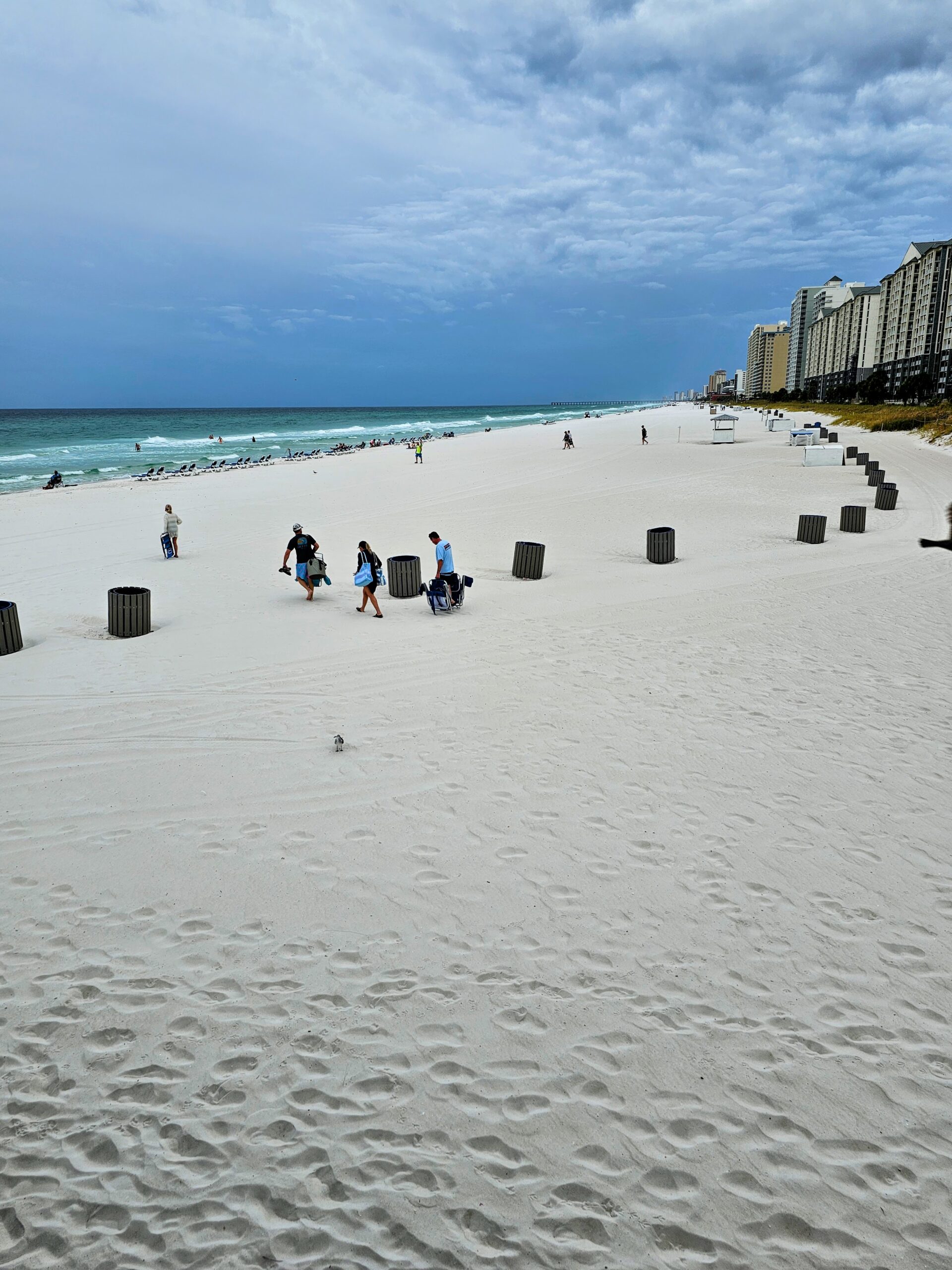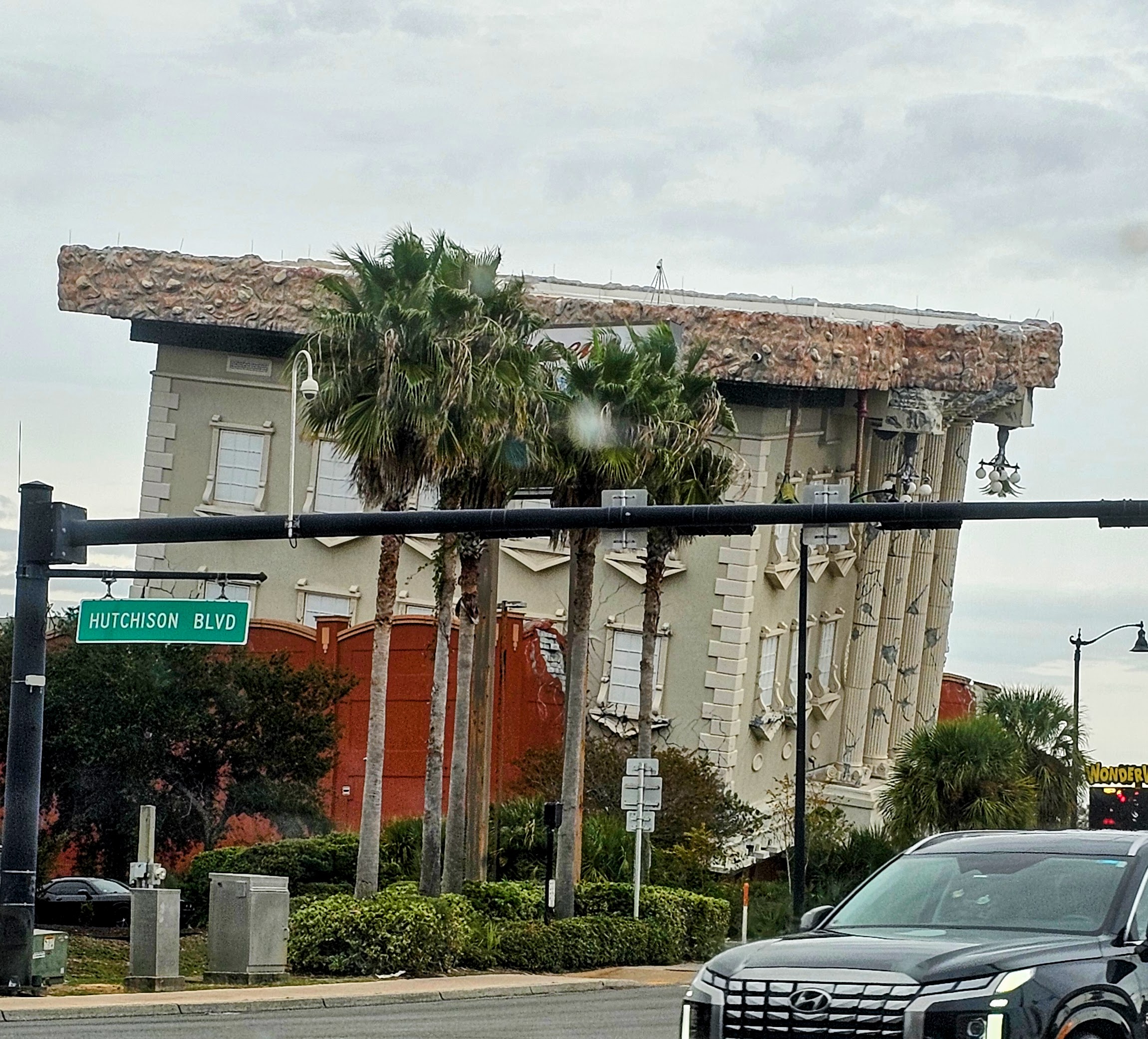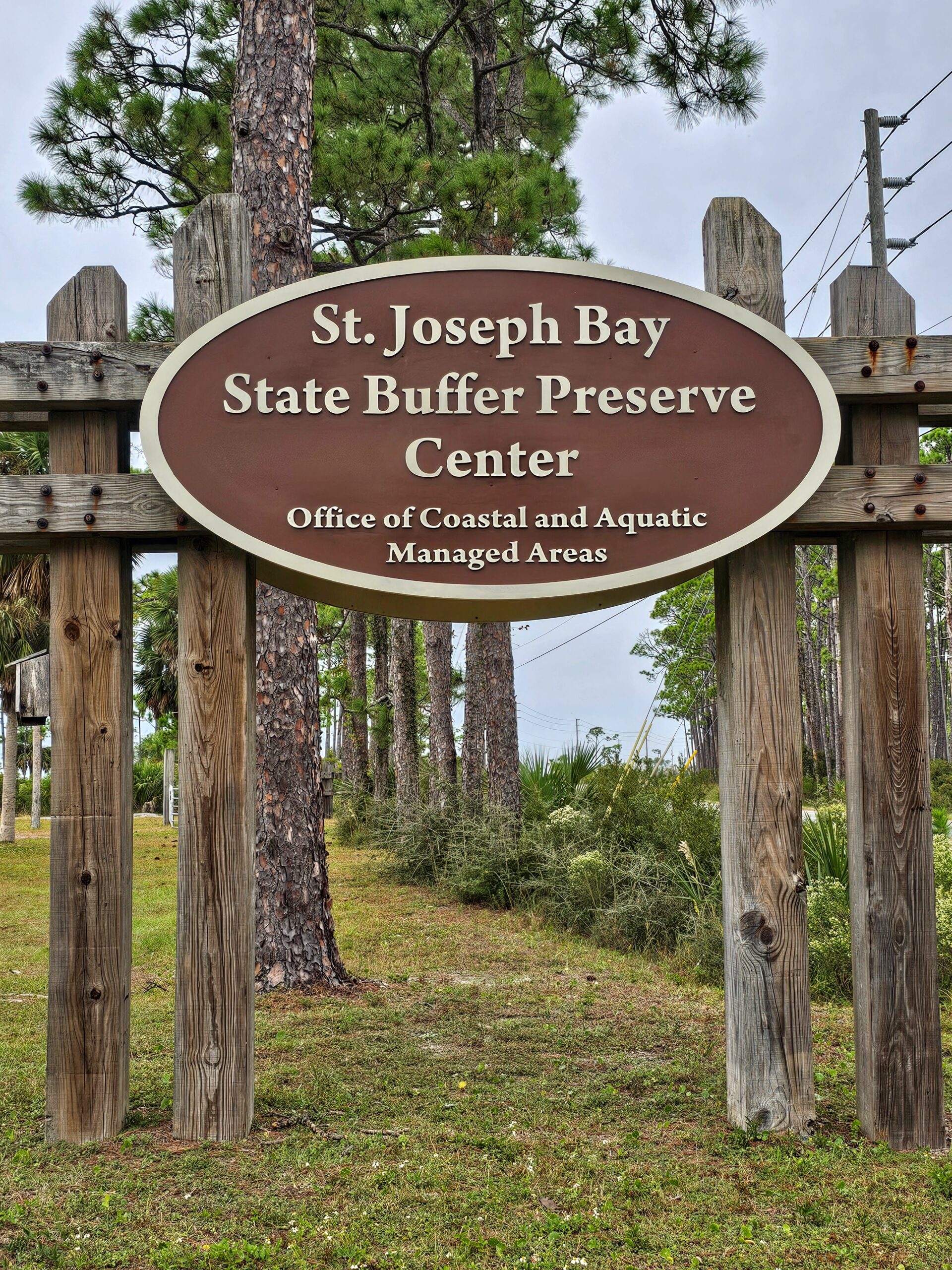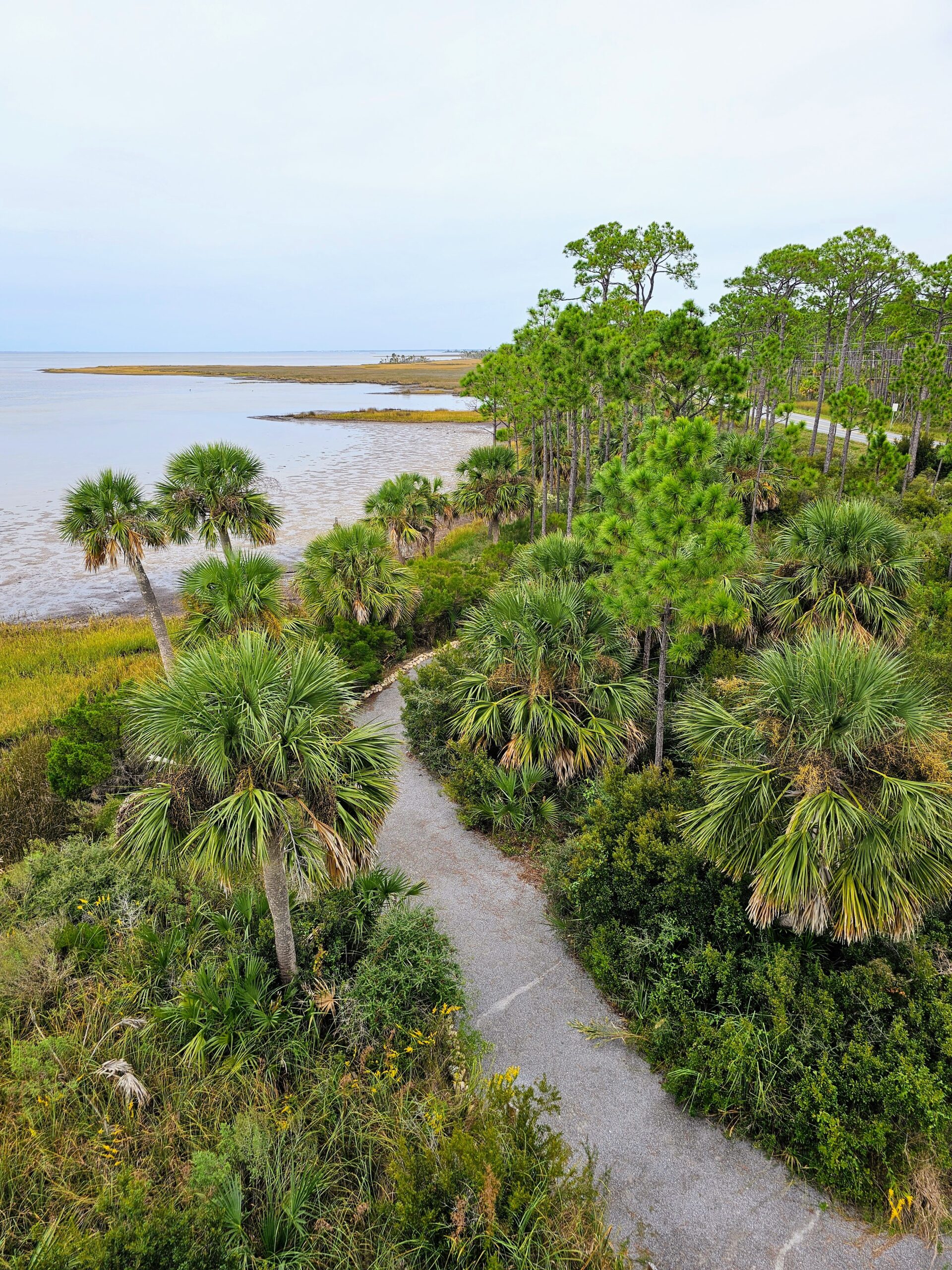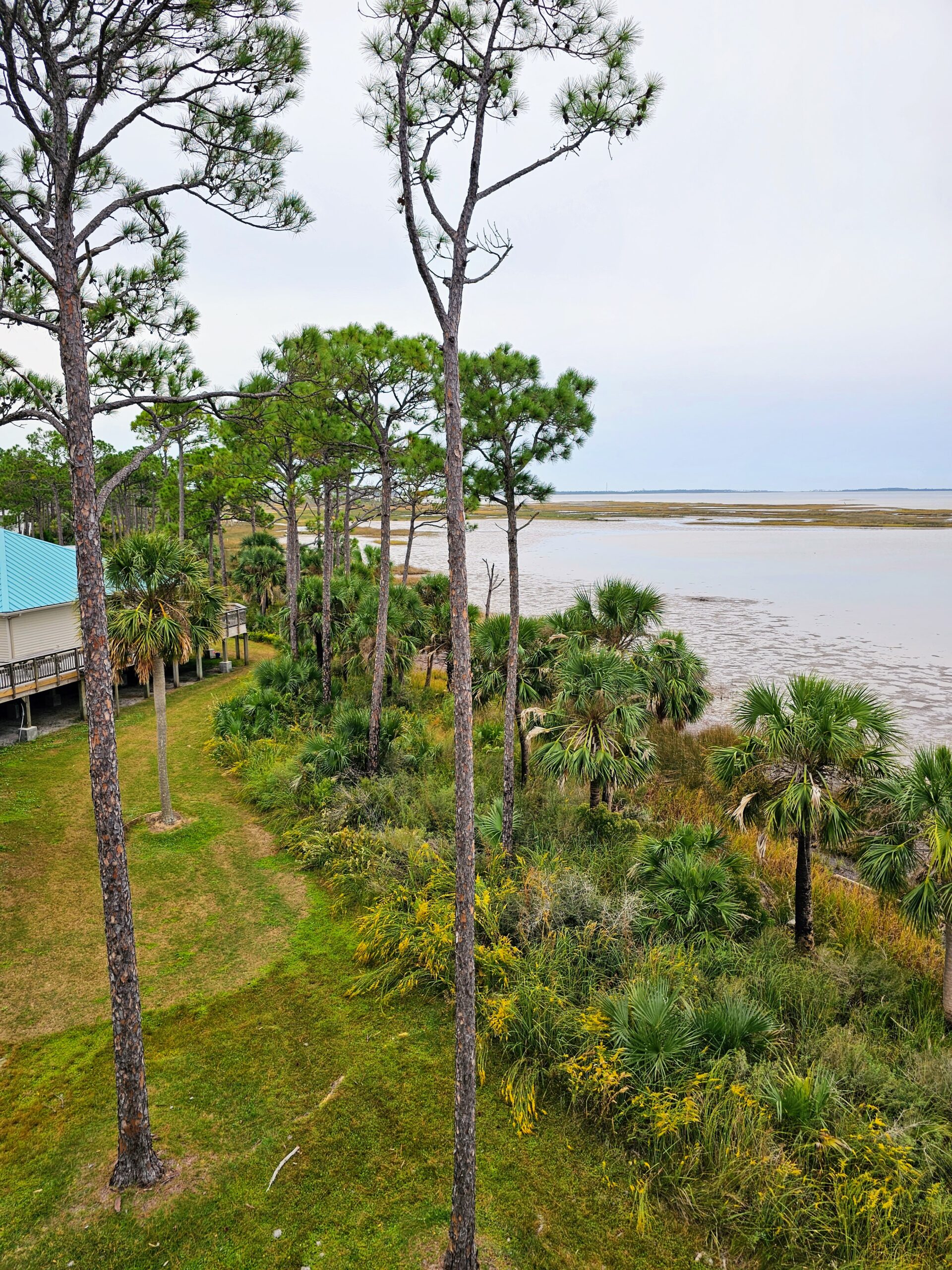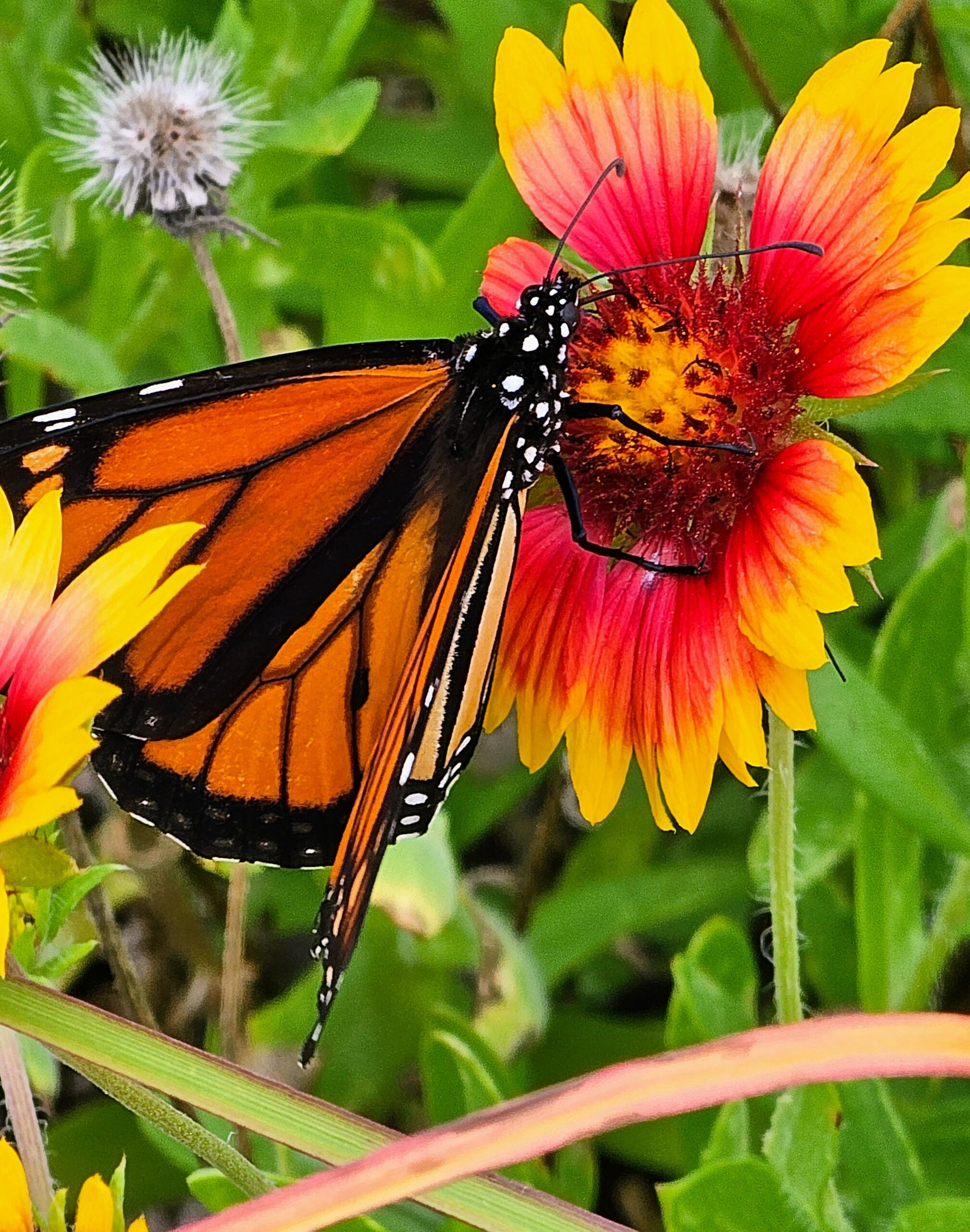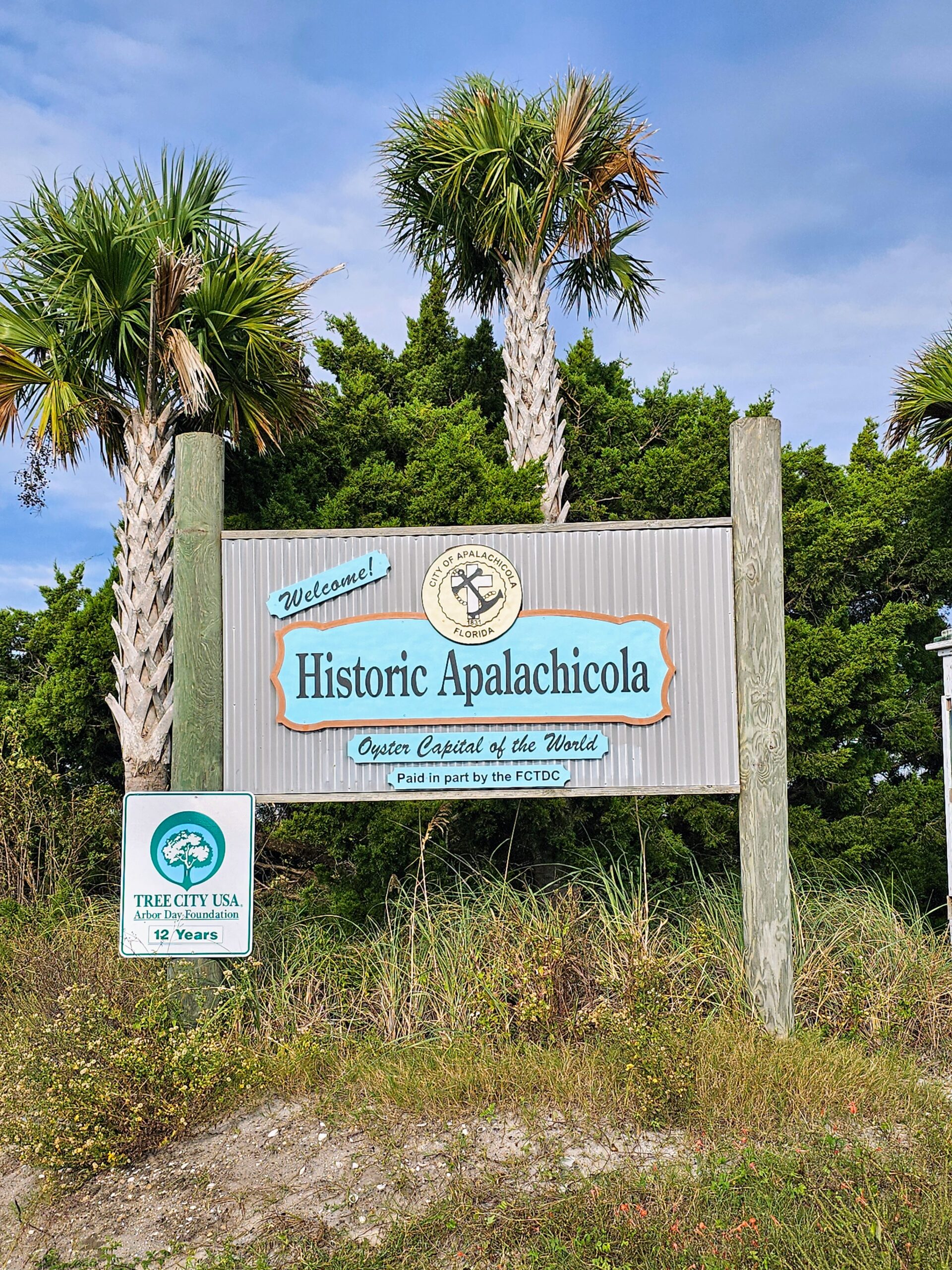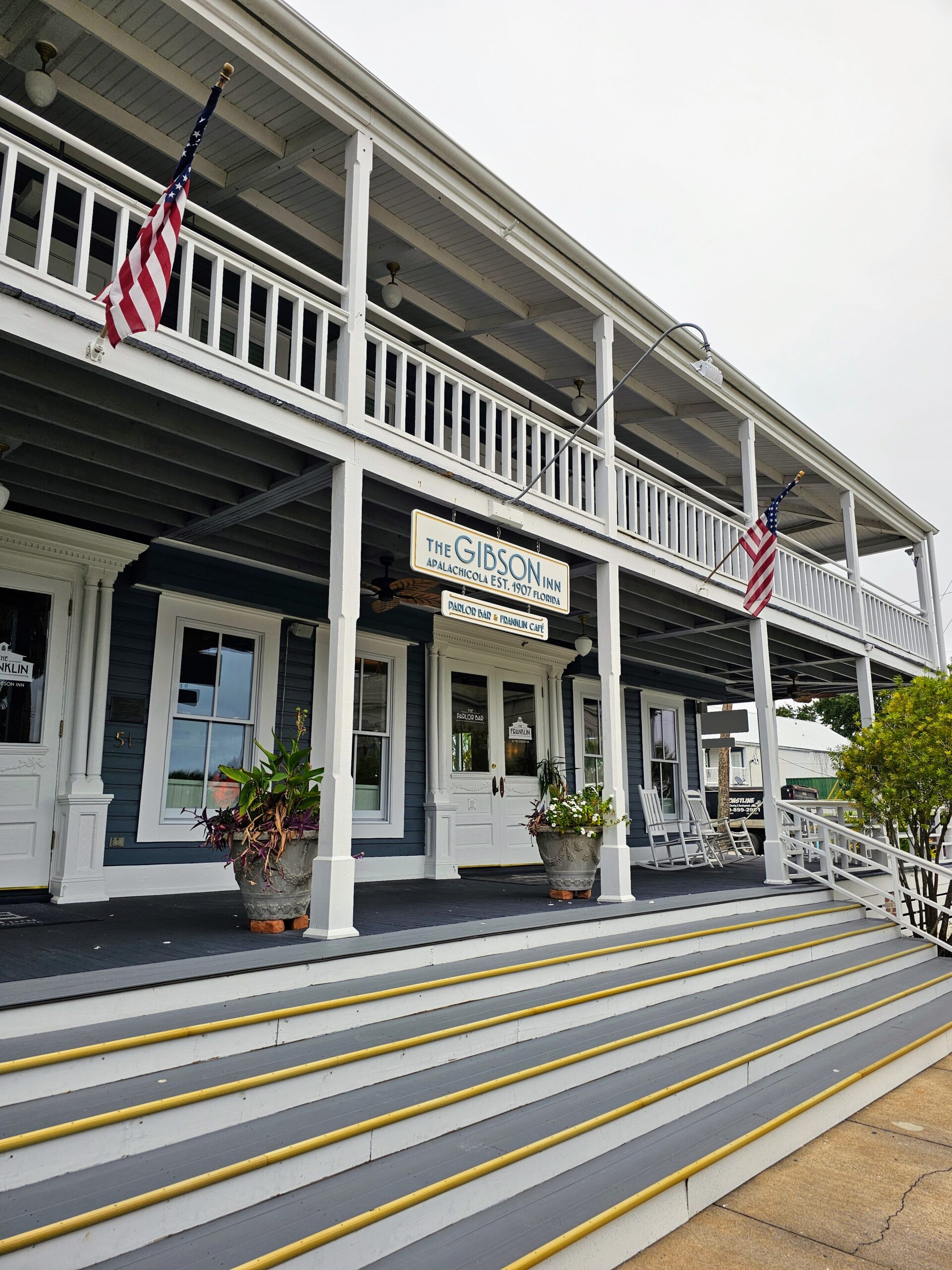On our first night in Apalachicola we discovered an excellent brewery called Water Craft!
Their brown ale is excellent! I love the message on the pint glass. Apparently this was a big problem previously? The outdoor tables make for excellent conversations with other beer lovers.
The next morning we were awakened by a thunderstorm, and we spent an hour sitting on the porch watching the storm roll by. After breakfast in the hotel (again, not a good restaurant) the weather cleared and we made our way over to St. George Island, a barrier island just off the coast of Apalachicola. Here is the St. George Lighthouse. Unfortunately it was closed so we couldn’t climb up for the view.
We entered the St. George Island State Park as it’s supposed to have some of the most pristine beaches on the Florida panhandle. Gotta be honest, the beaches in Pensacola Beach and Rosemary Beach were more beautiful.
These beaches have turtle activity from May to October, but unfortunately by the time we got there the turtles were all gone.
We did take a nature hike into the area behind the beach. Nice trail, but fairly exposed and after the mornings rain the air was quite humid.
Still, we needed to get our steps in. It’s hard to believe that 4 hours prior the skies were completely socked in by storm clouds!
That night we took a walk along the Apalachicola waterfront before dinner. Here you can see a thunderhead forming, but that headed east and our stormy weather was done for the foreseeable future.
Another shot of a shrimp boat along the waterfront. The sky was perfect for photos!
Way back in 1822 Apalachicola became the epicenter of cotton shipments to New York. The amount of cotton shipments grew so quickly that the town built 43 three-story warehouses along the waterfront to hold it all!
There are only two of these historic warehouses left unfortunately. Kim is standing in front of the most original one.
This building is now a Center for History, Culture and Art. We visited the next day and it’s well worth walking through, with a lot of history about some of the local slave trade and one of the most famous freed black men, abolitionist Moses Roper, whose amazing life needs to be turned into a Netflix documentary! He wrote a book released in 1837 (released mostly in England), A Narrative of the Adventures and Escape of Moses Roper, from American Slavery. They didn’t have short book titles back then! I plan to read it after we get back home.
We saw this on a street corner in little downtown Apalachicola, right in front of the Post Office, and wondered “do they have a bit of a drug problem here?”. This is a first for us.
Saw this pelican posing for us and had to get a photo!
On our final day here we had an afternoon boat ride that was to take us into the backwaters of Apalachicola River. We almost immediately saw a Bald Eagle, which I wasn’t expecting, but it flew away before I could get a shot.
We came upon this old abandoned railroad trestle, stuck for decades in the open position.
This trestle and the associated rail line dates from the cotton boom of the tiny port. The entire swinging portion of the trestle operates from one point with some pretty massive gears!!
The best part of the boat ride was our Captain getting us into some pretty confined spaces. It was low tide, so I’m glad we made it out! Gorgeous spot!
Our Captain took this photo, but it’s unfortunately from a text and doesn’t have full resolution. Still, it gives you an idea of how cold we got on this boat tour! Florida is not hot and humid all the time, far from it!
Our Captain pointed out this plant along the shoreline, known as Spider Lilly. Apparently it’s pretty rare this time of year.
These little houseboats are all over the place in the upper river, spots for people to come fish for a few days at a time. They were in various states of almost new to half submerged in the river.
Before we left the town we walked across the street from our hotel as we saw this monument dedicated to Lt. Willoughby Ryan Marks, a Apalachicola resident, who showed extraordinary valor and sacrificed his life during WWI.
We also saw this statue of Benjamin Franklin, the namesake of Franklin County. The statue is adjacent to the Franklin County Courthouse, holding the preamble to the U.S. Constitution. Good looking statue! Glad it hasn’t been torn down!
Coming up, we drive over 5 hours and visit St. Augustine, the oldest city in the United States, with plenty of history!!
